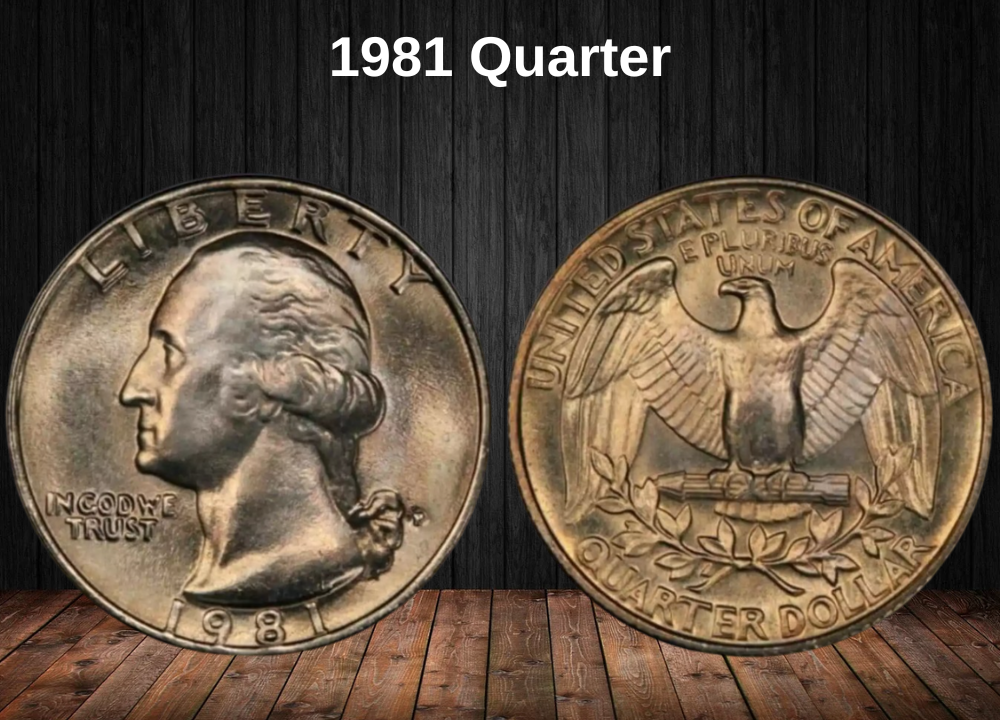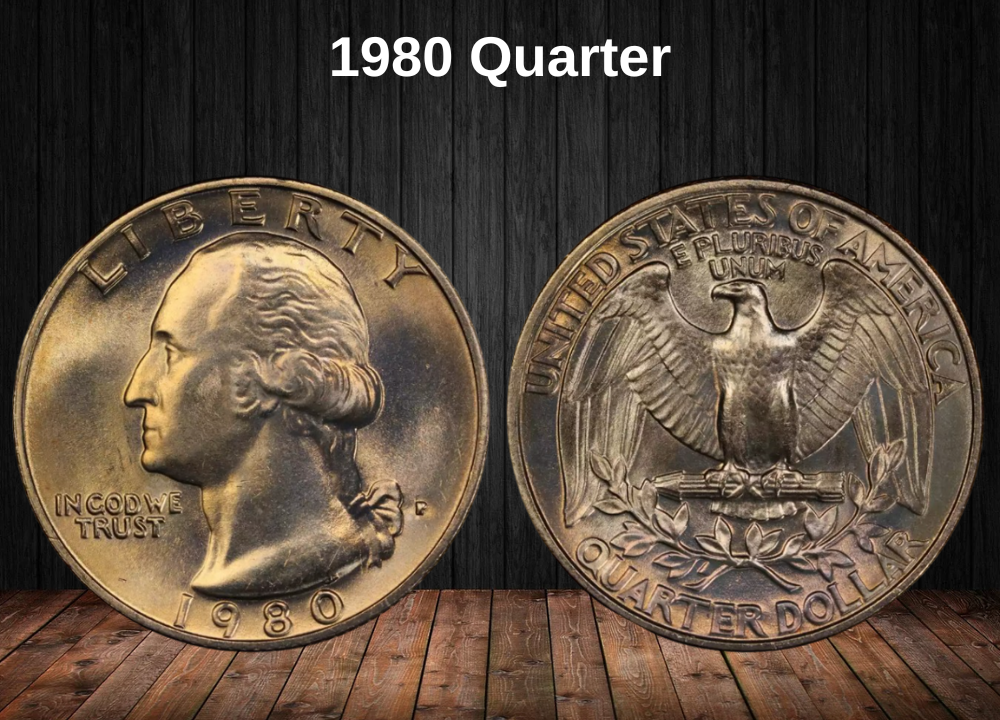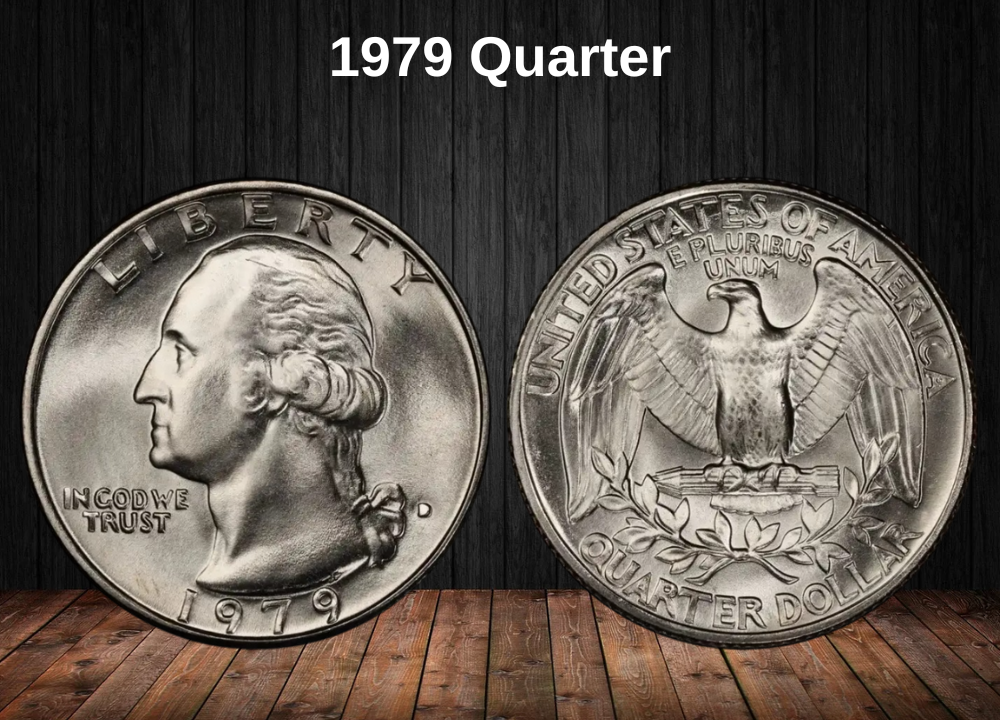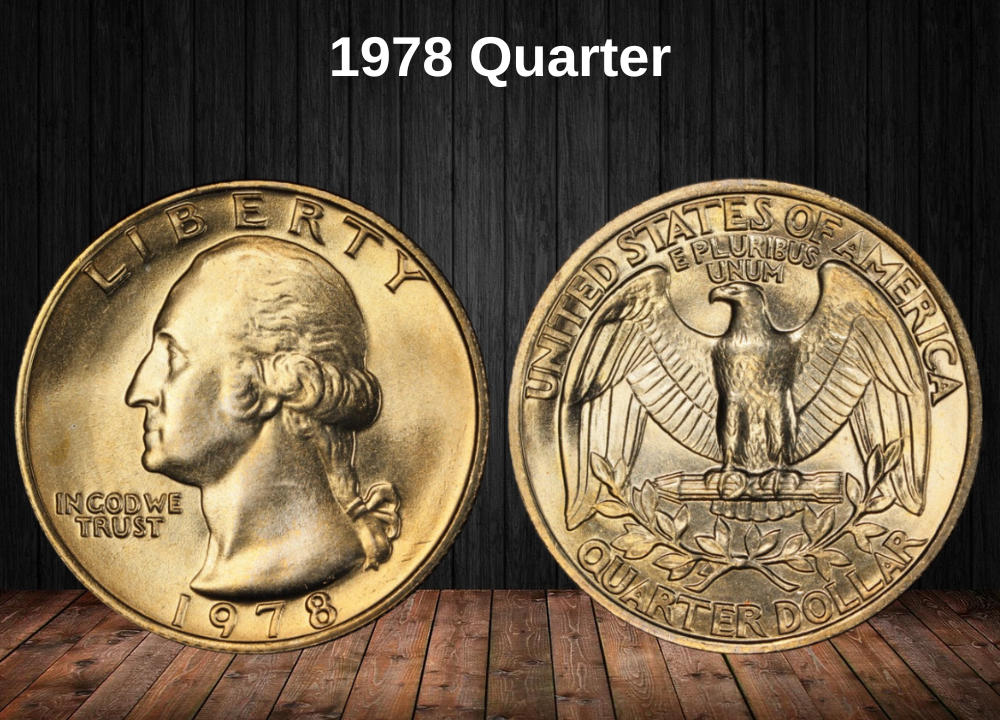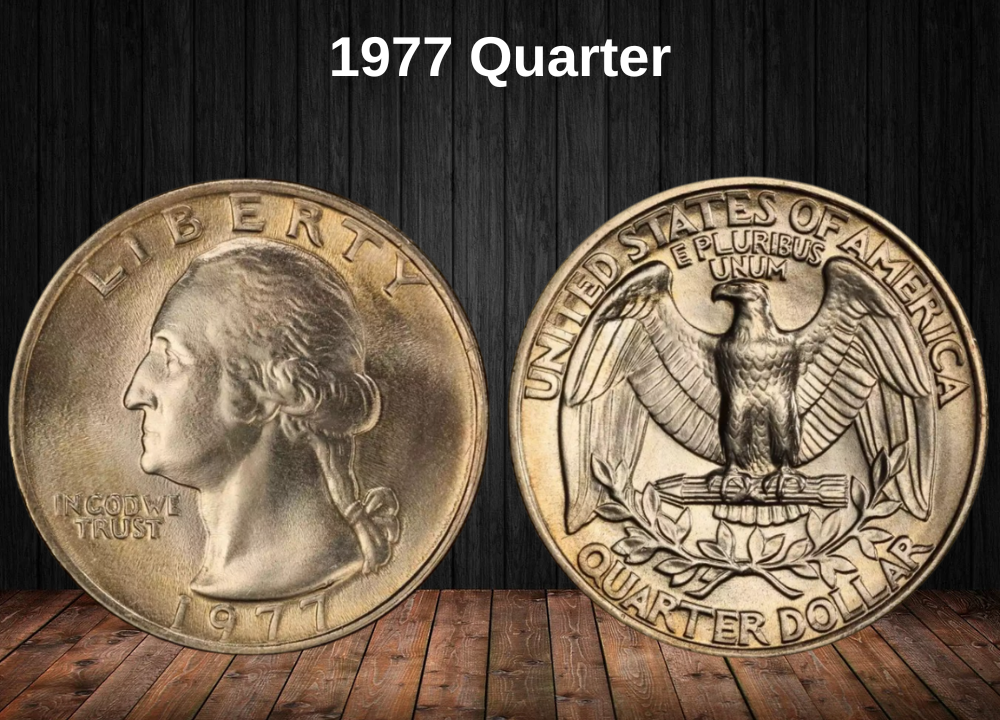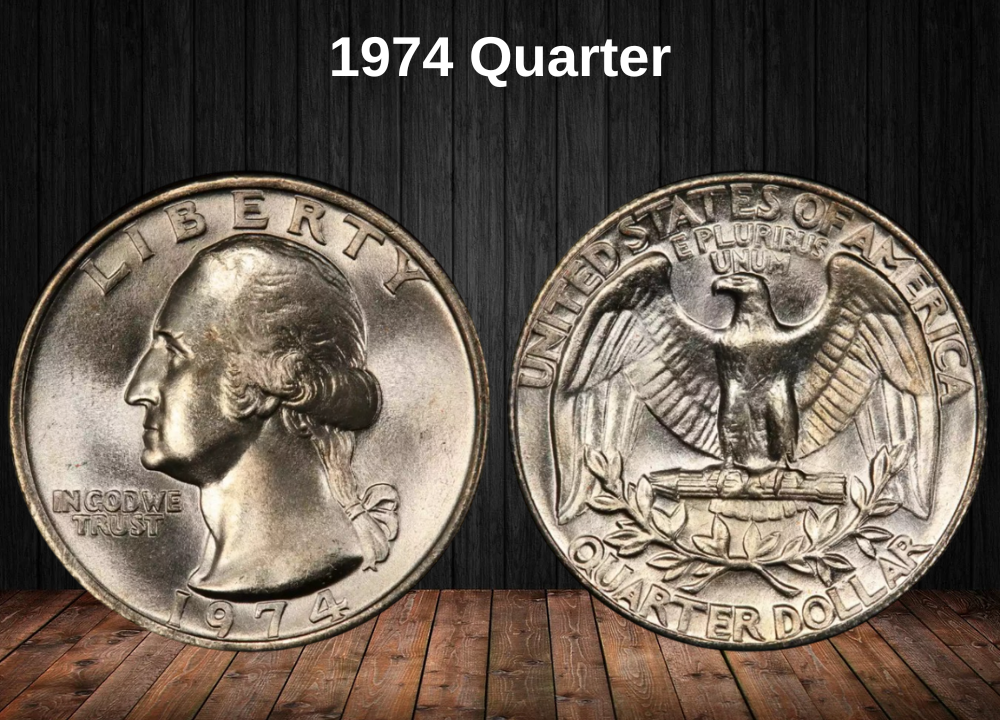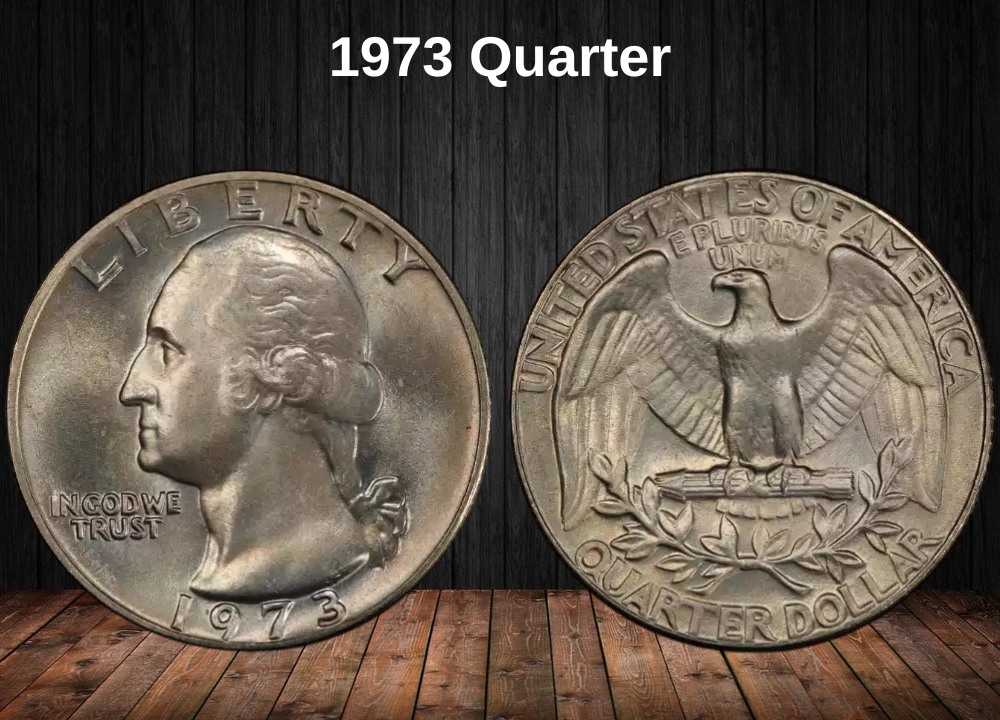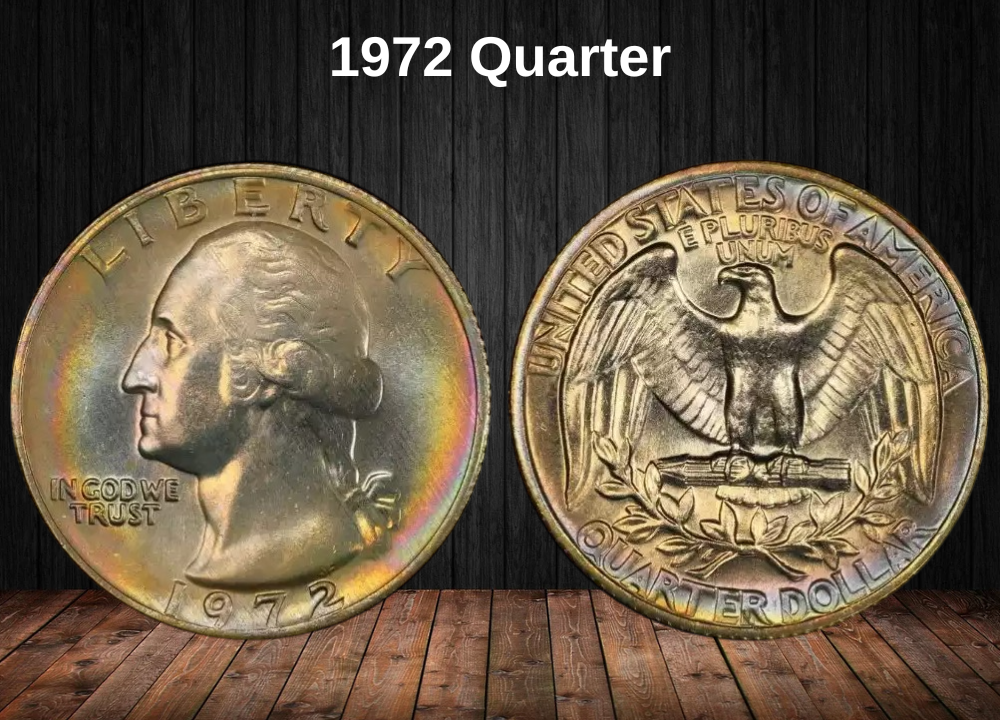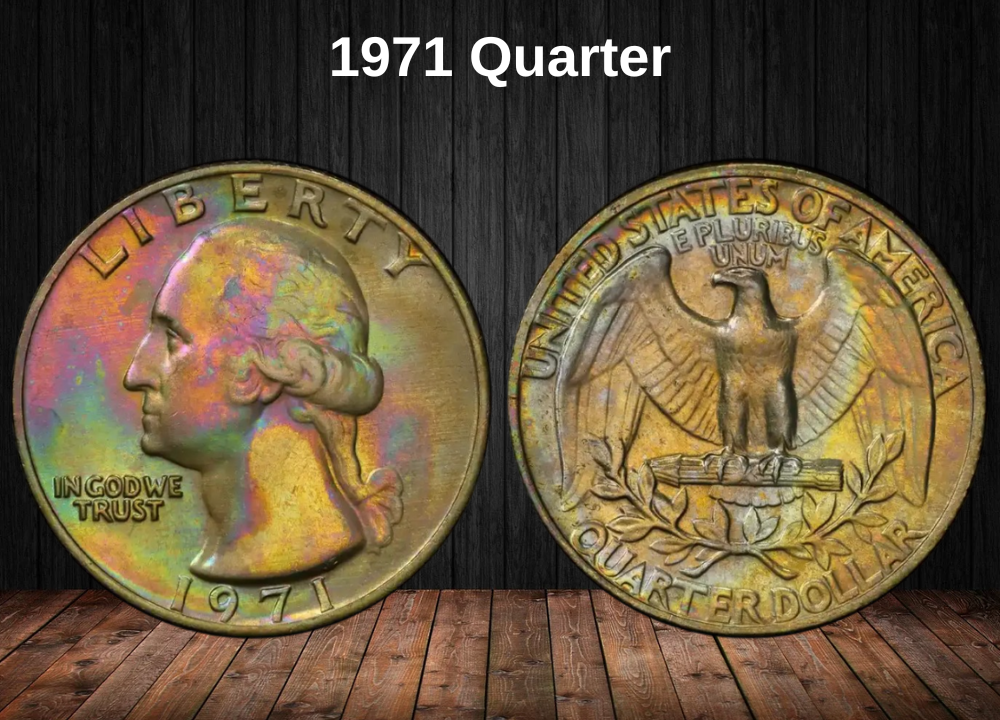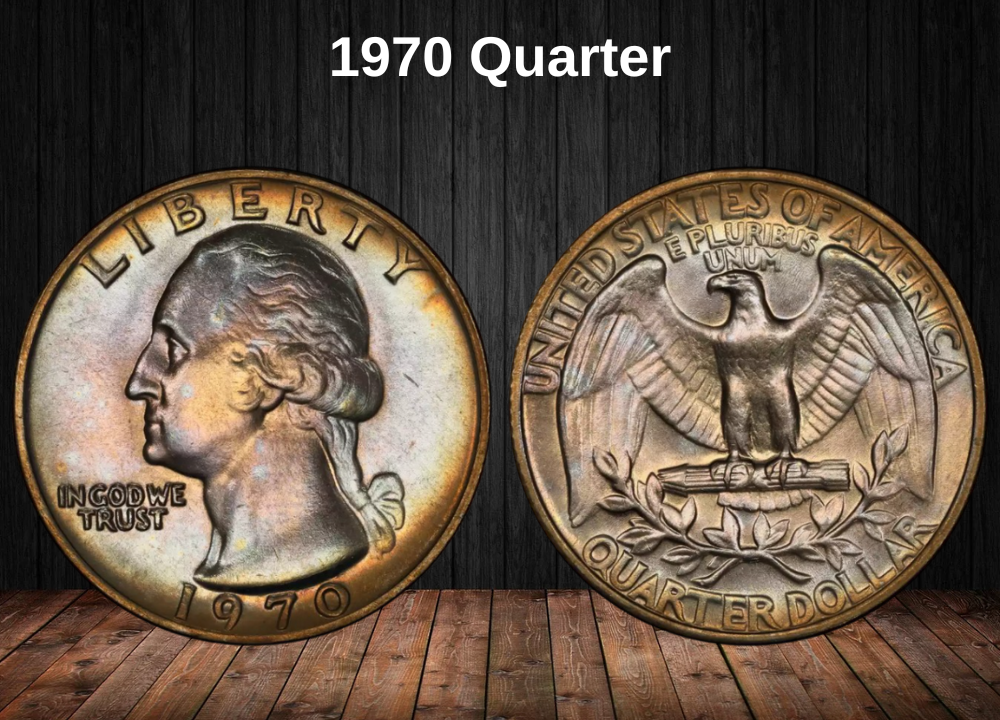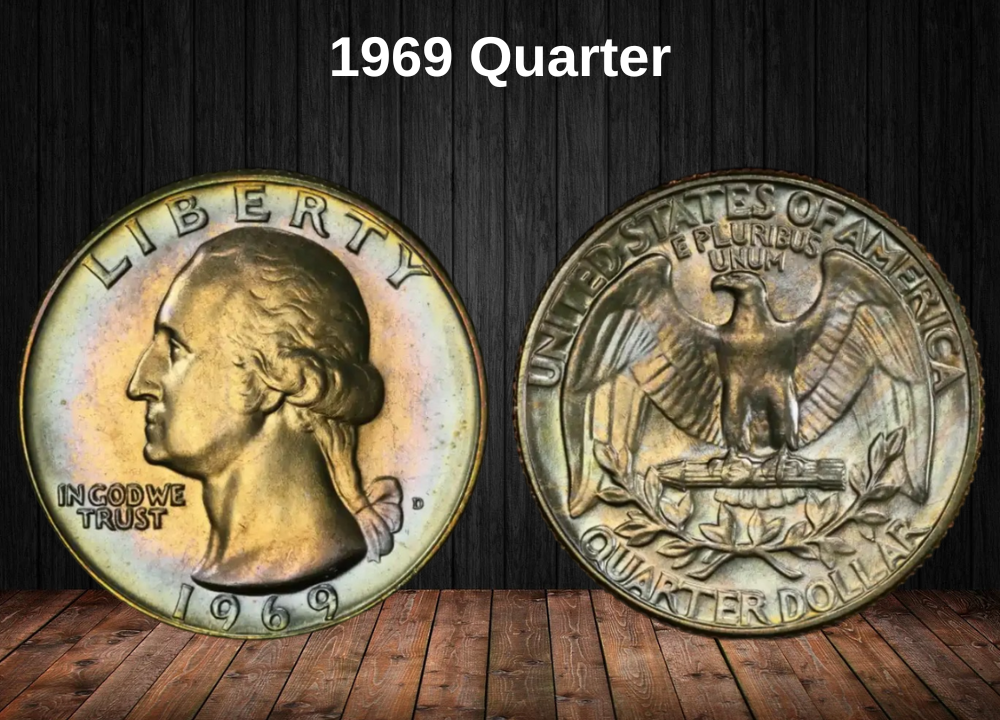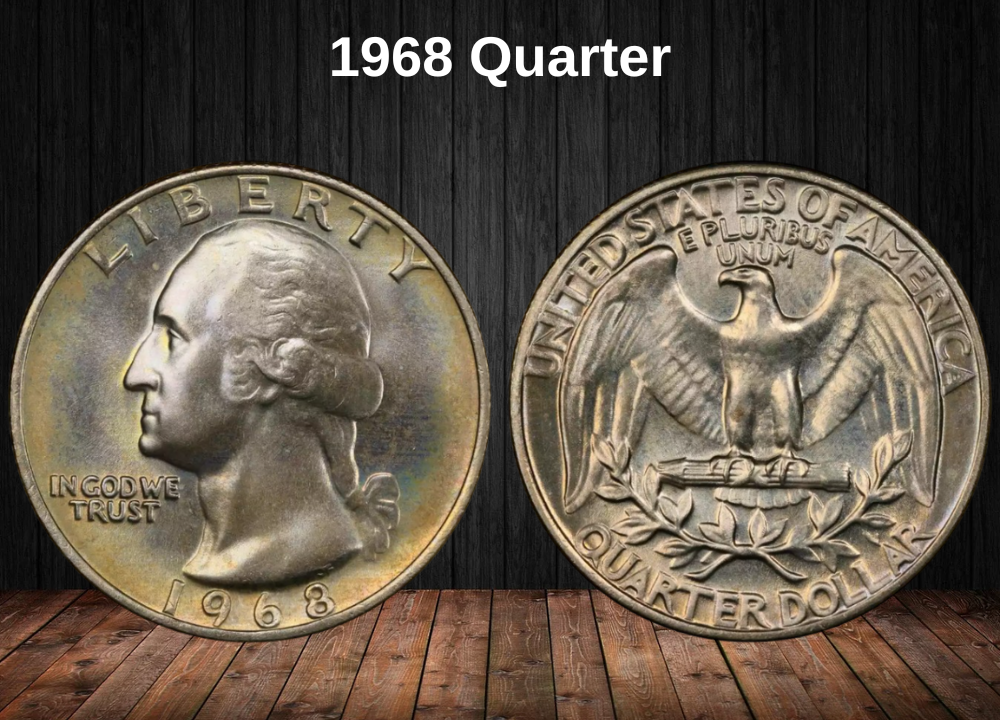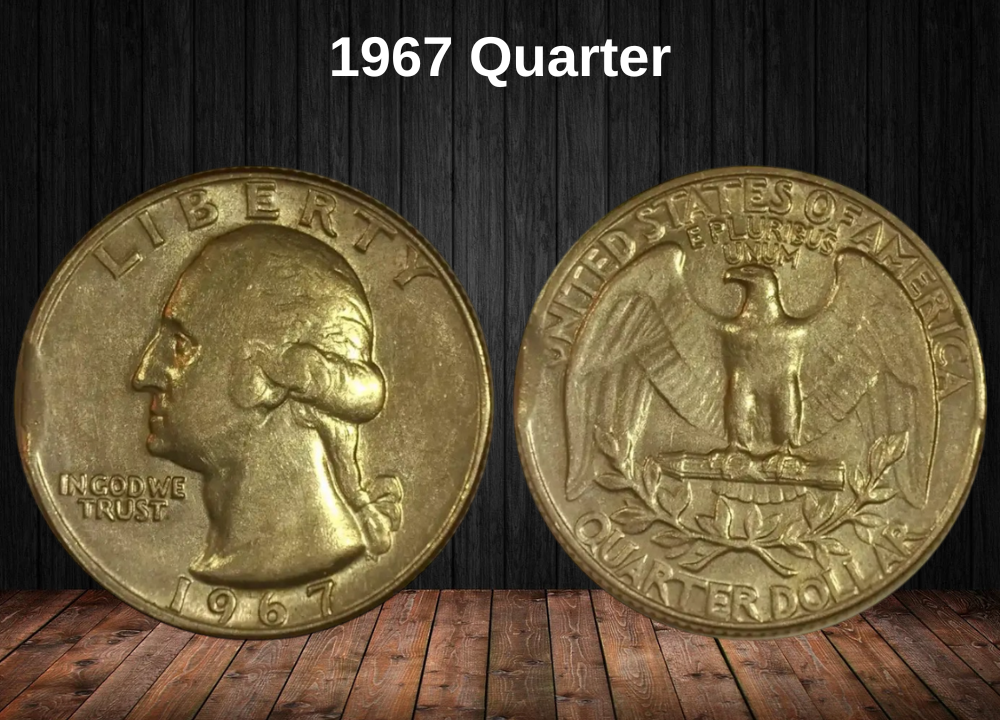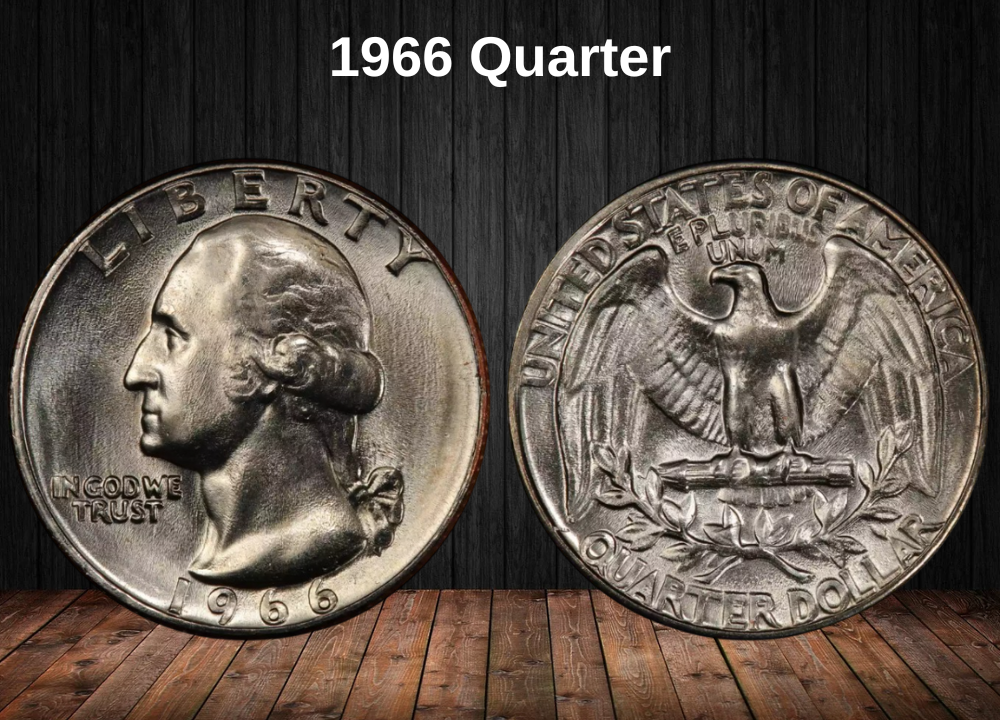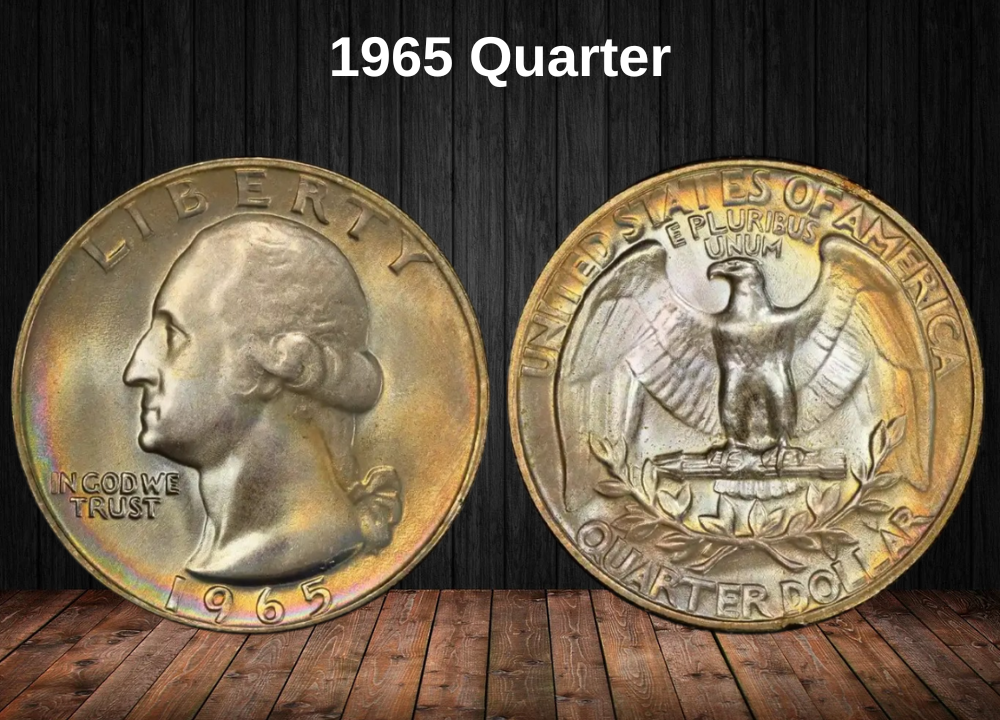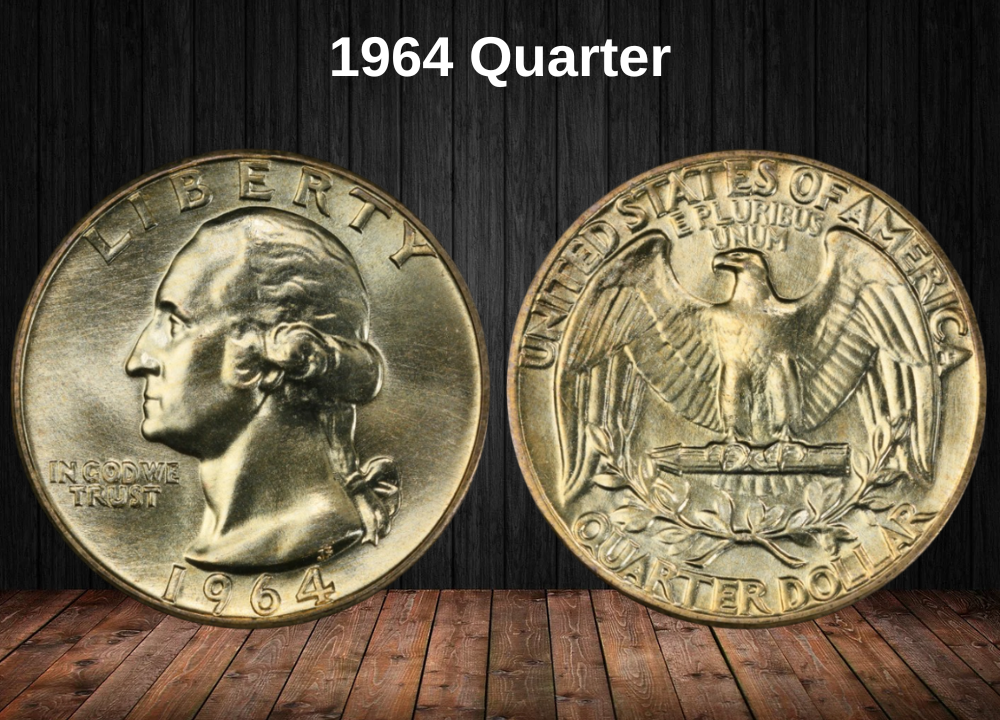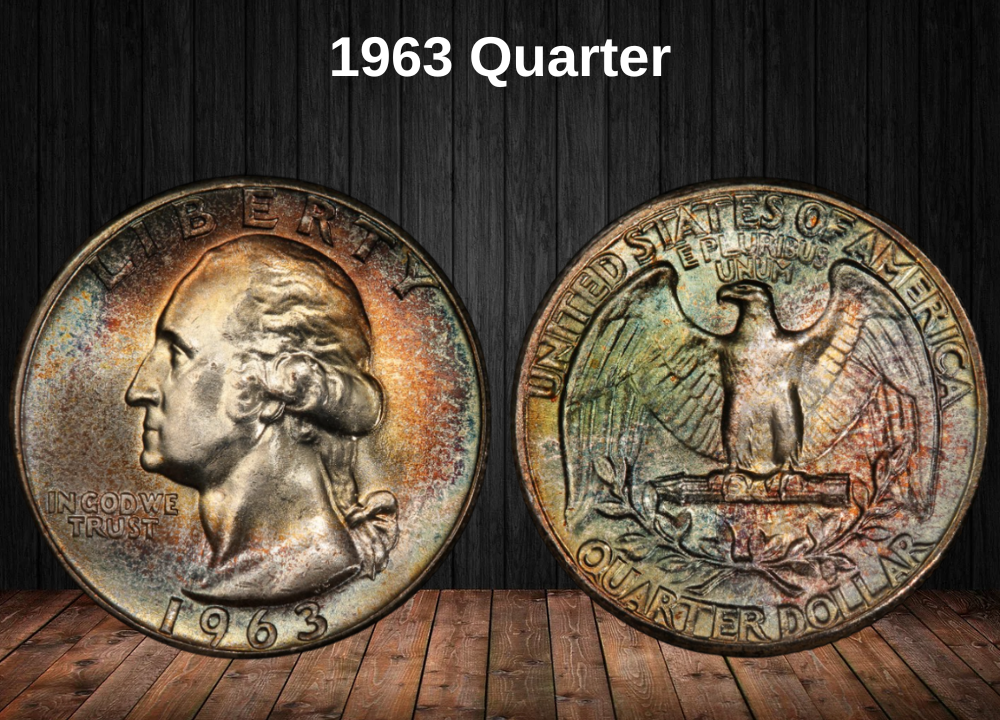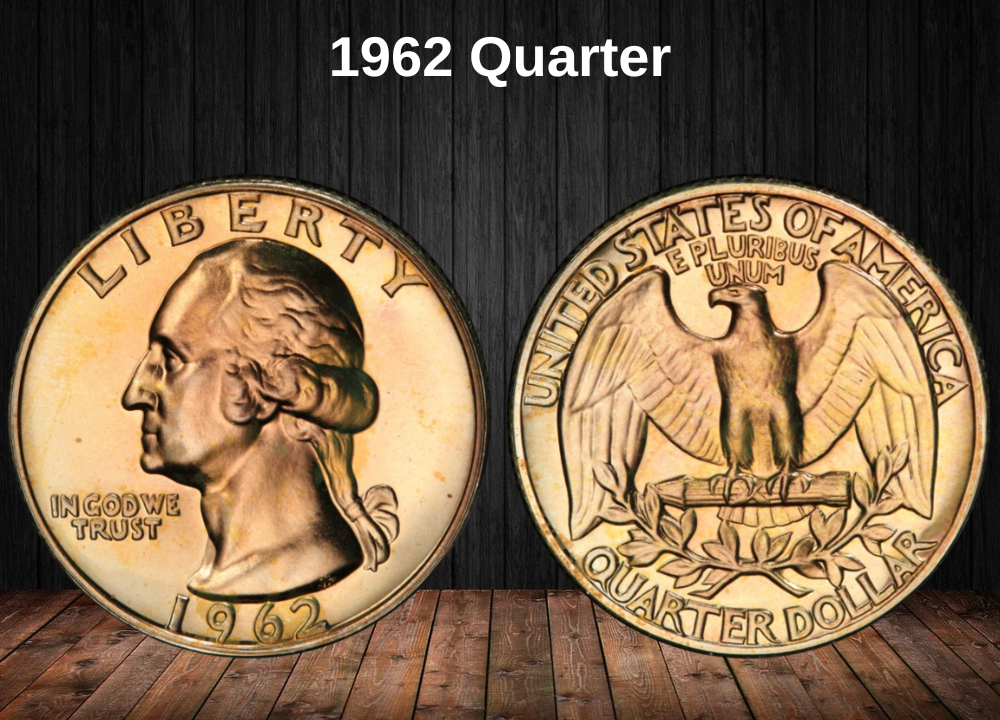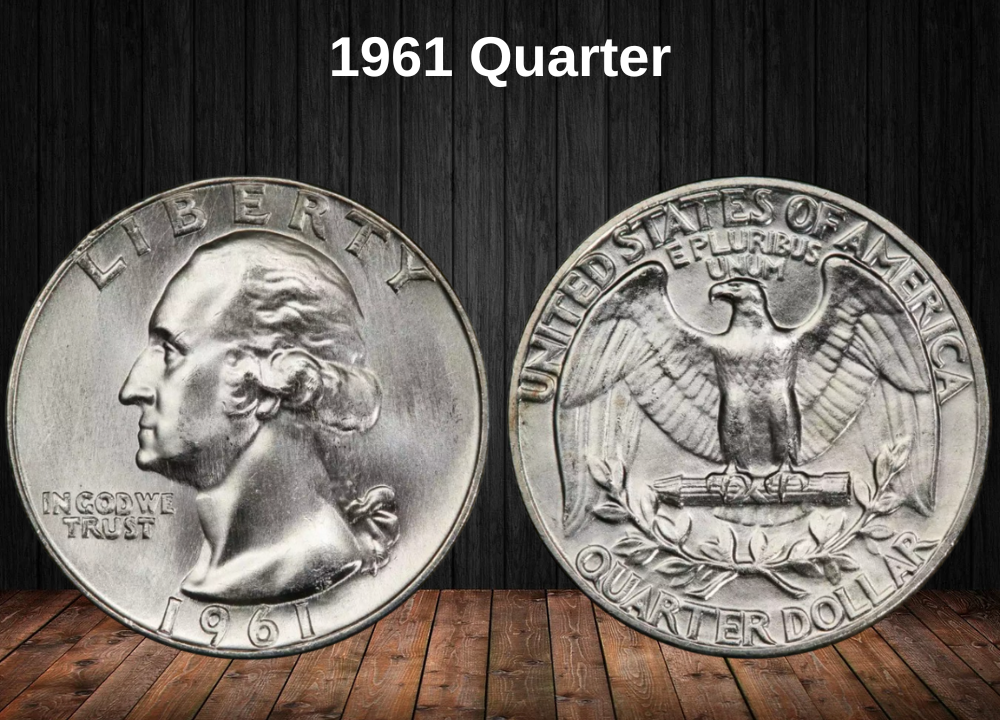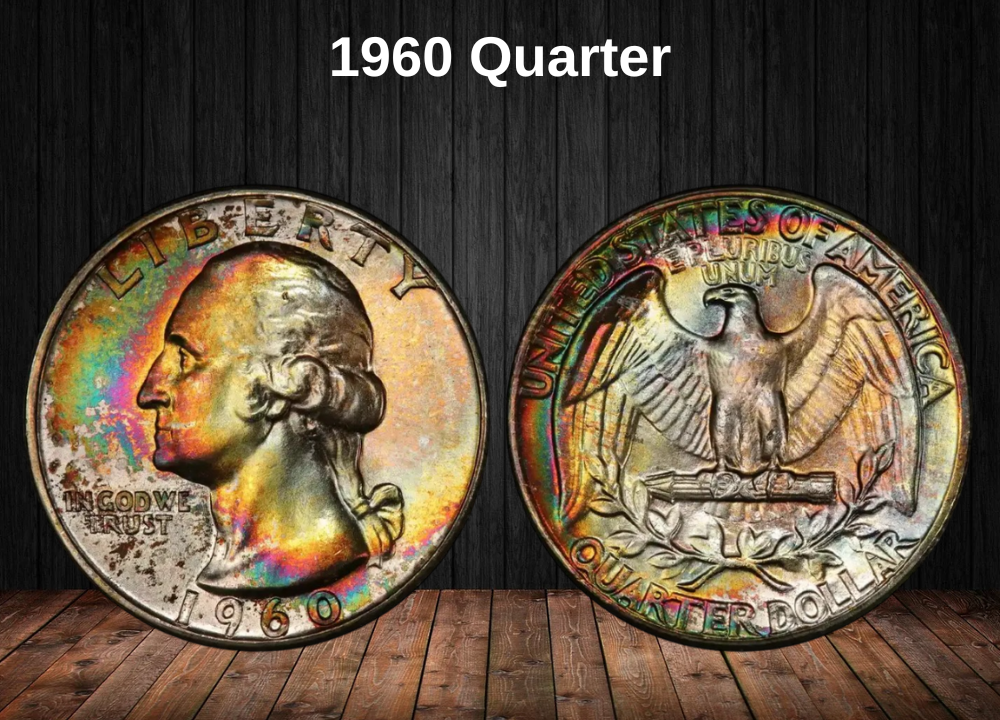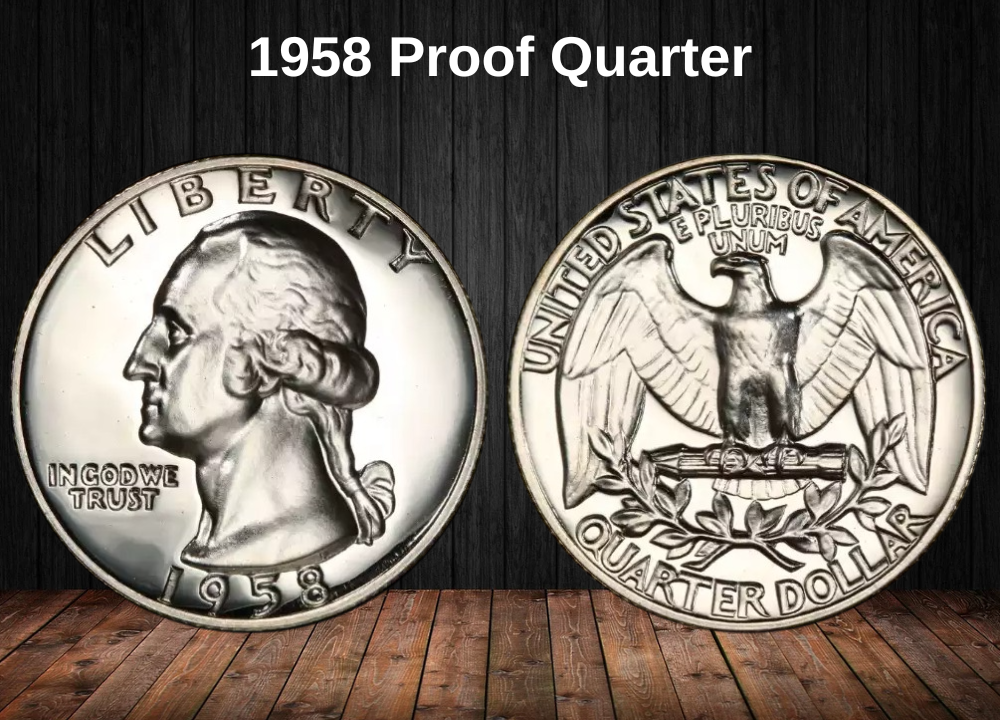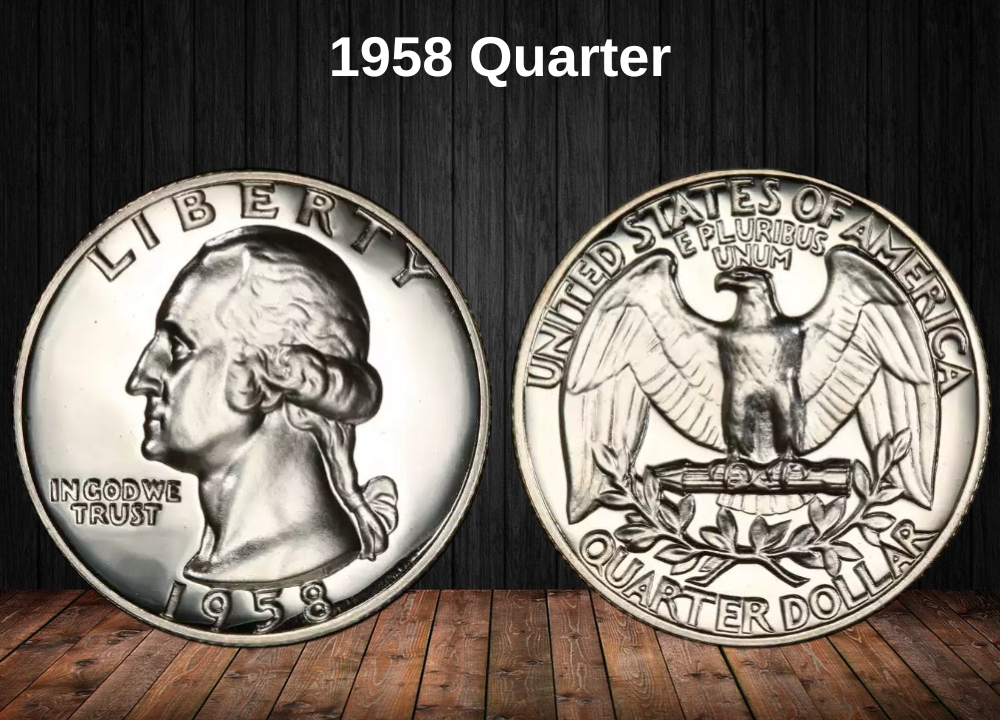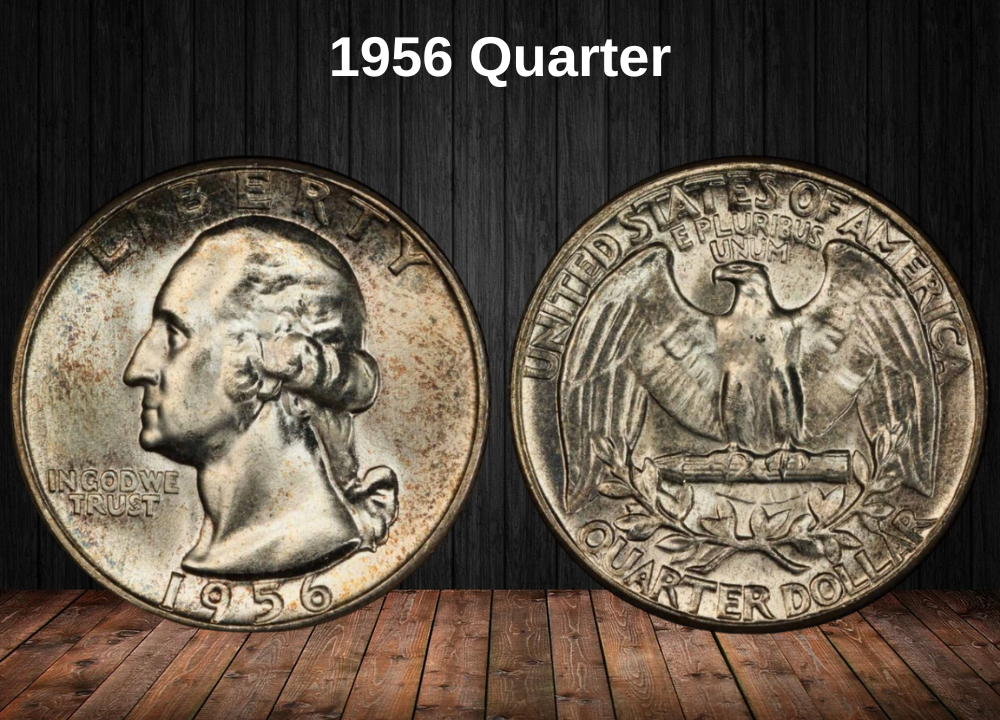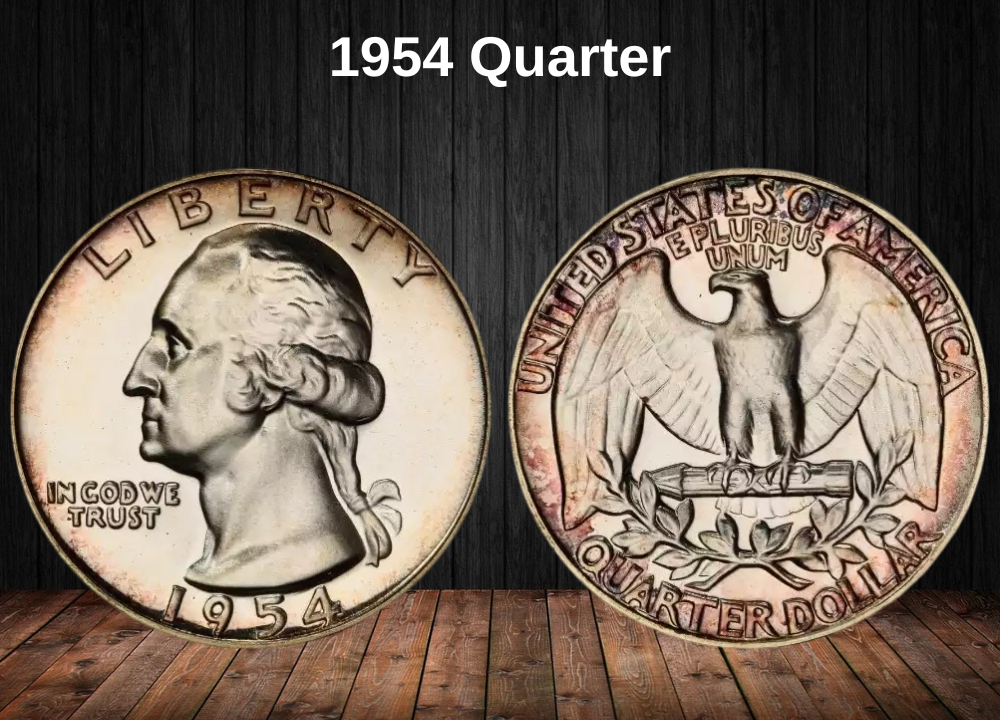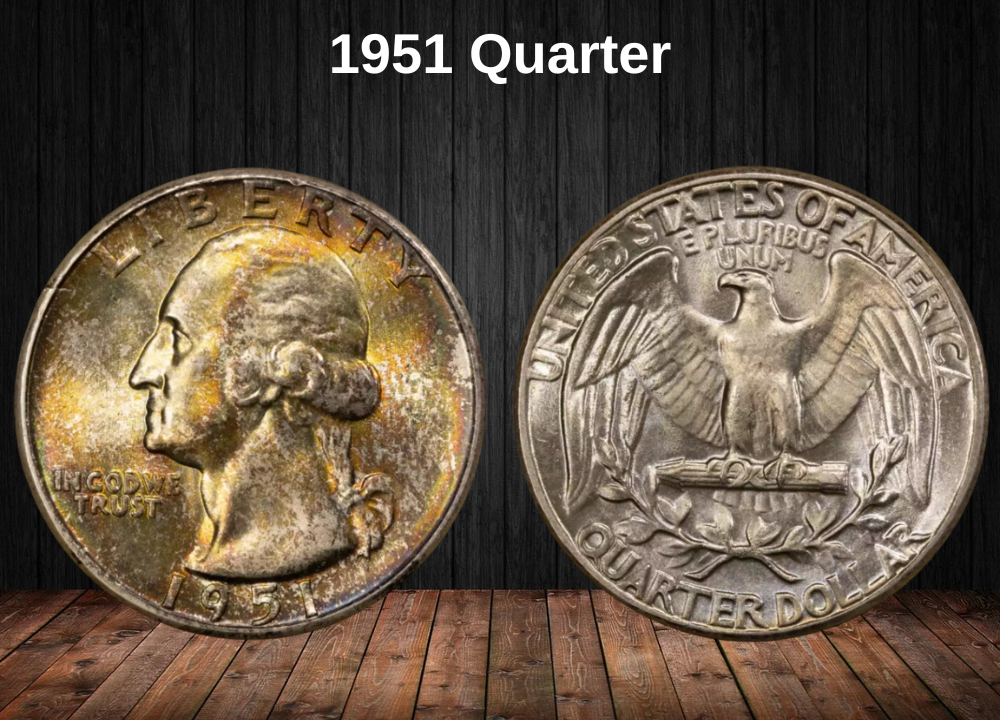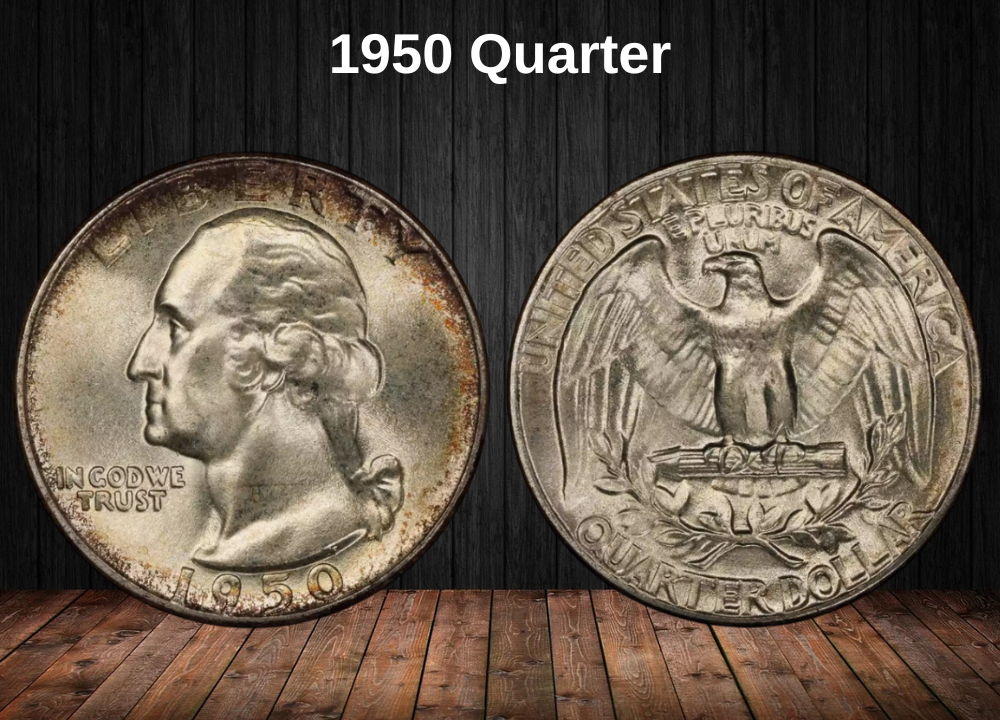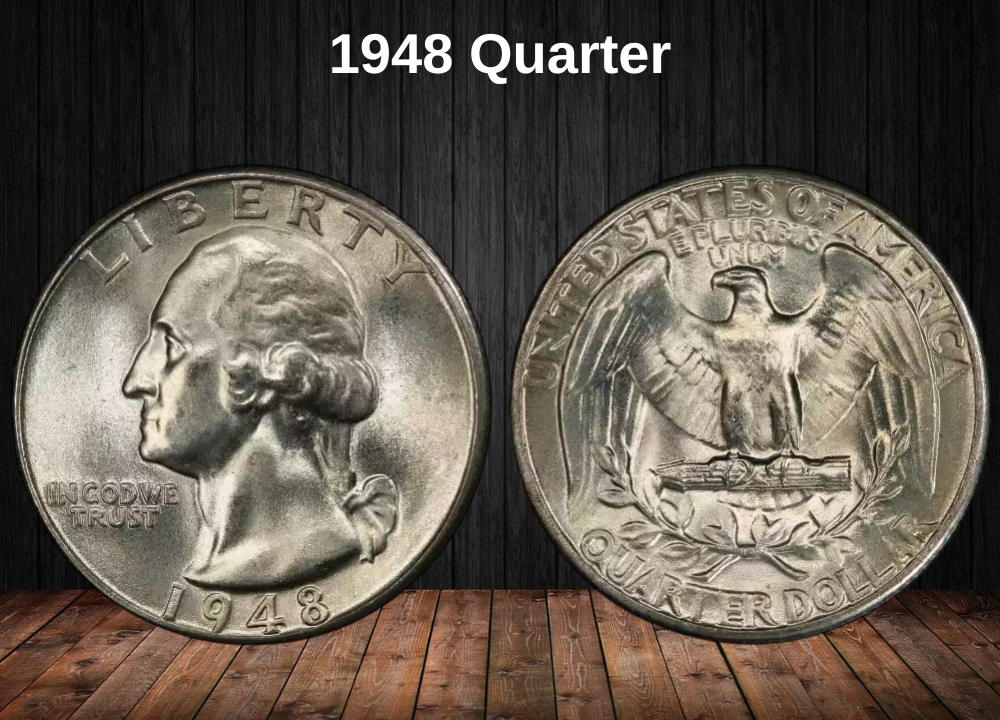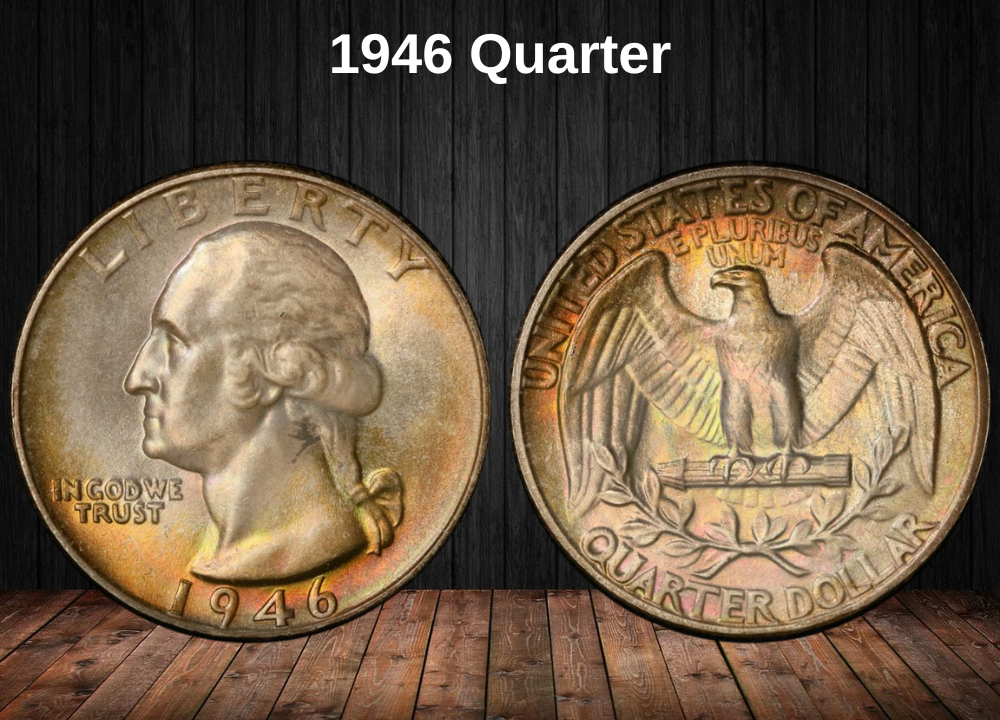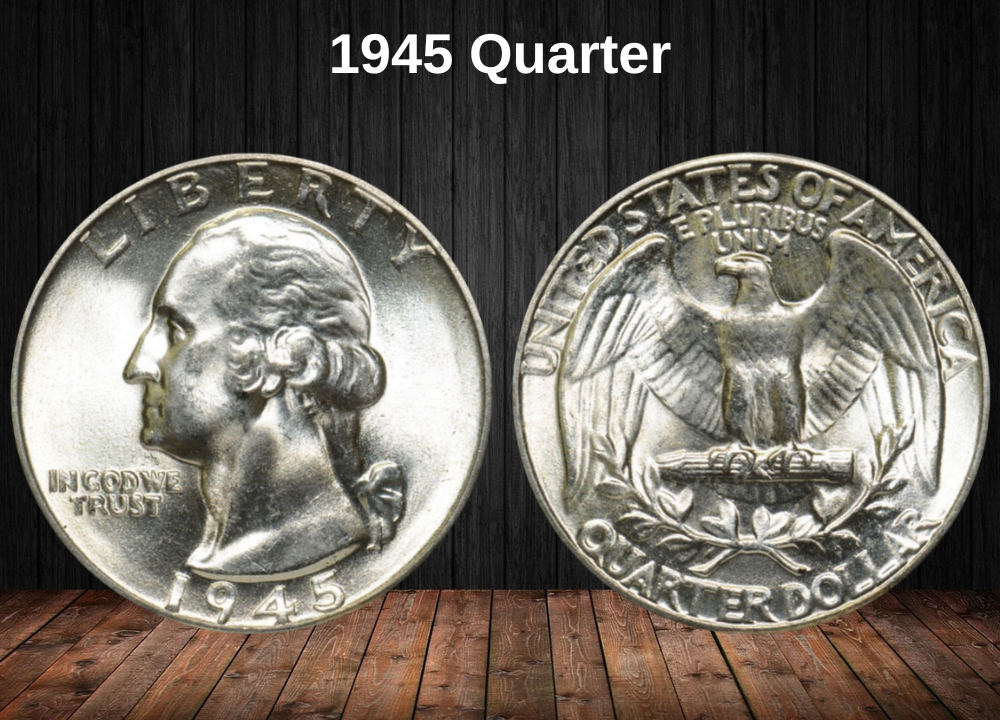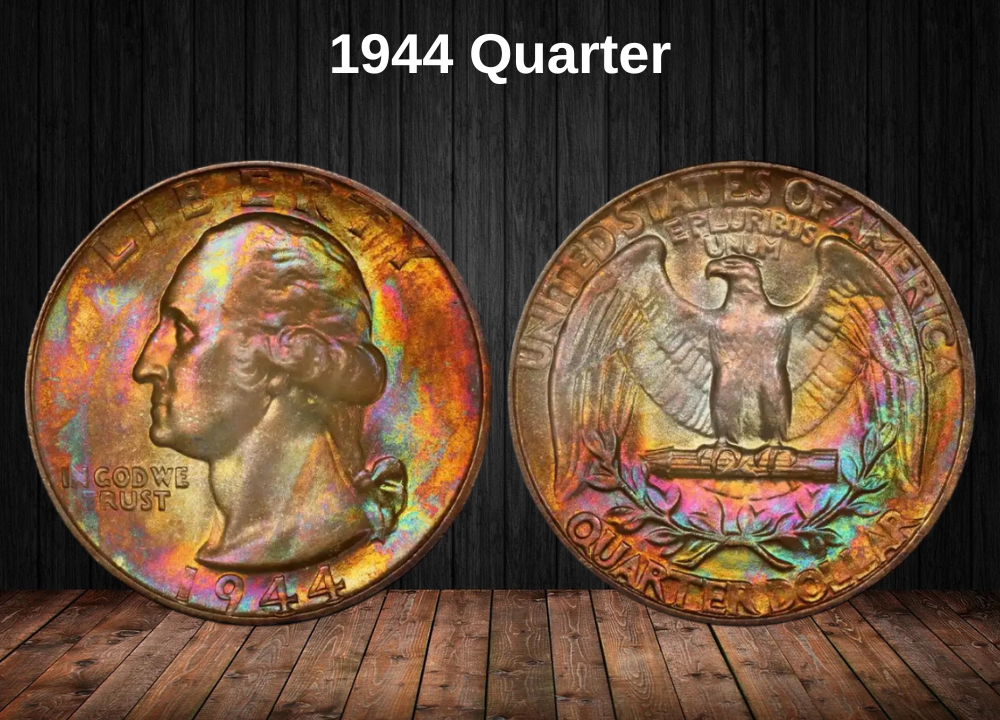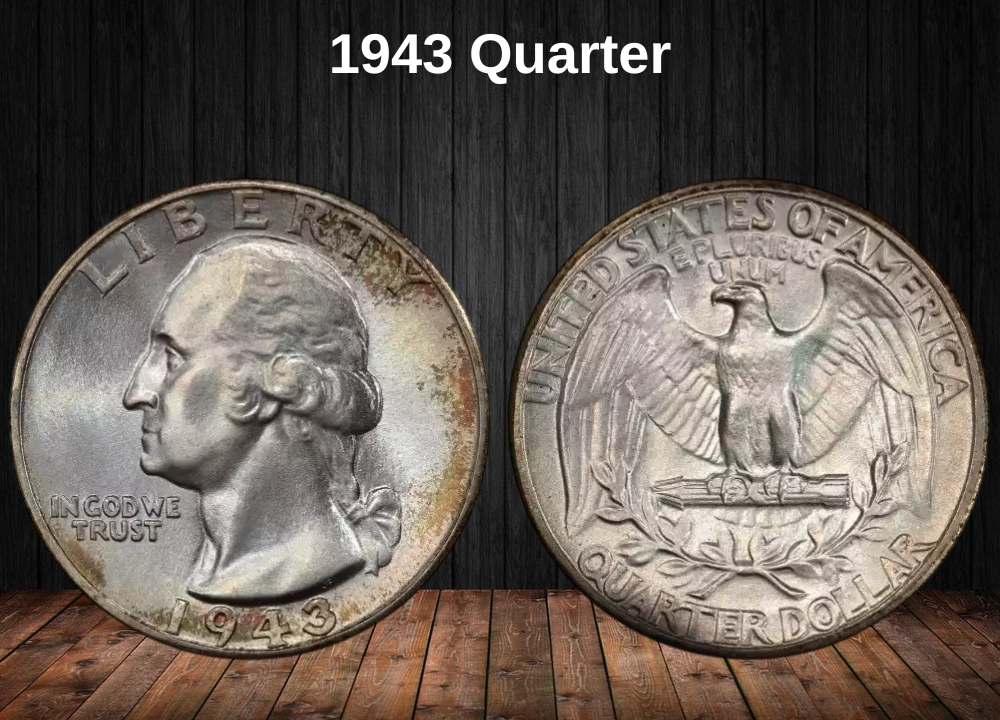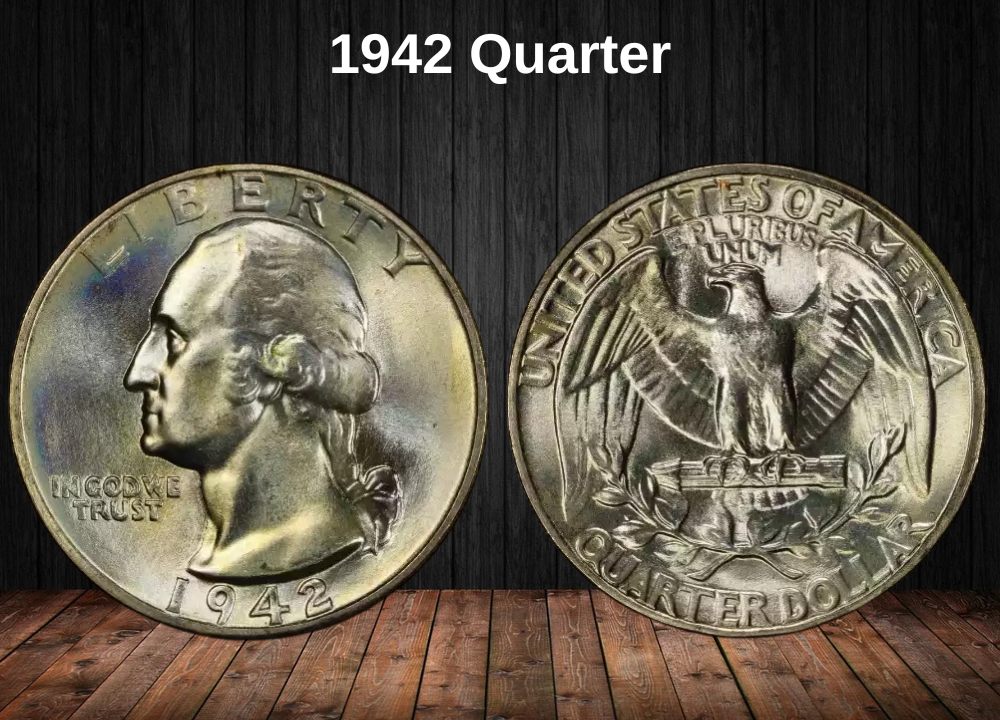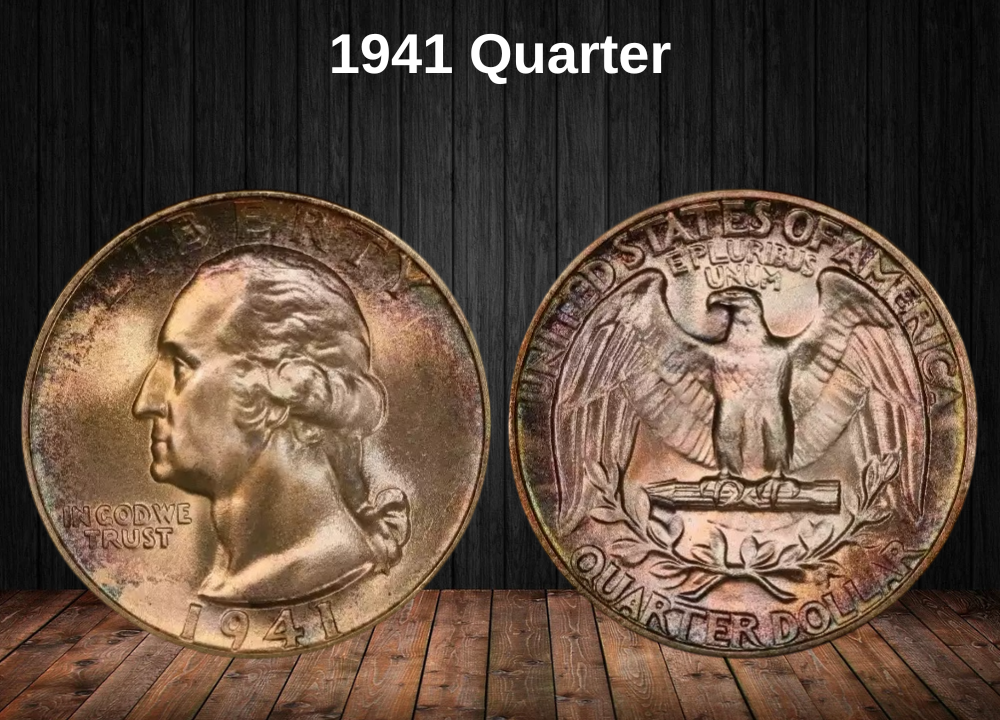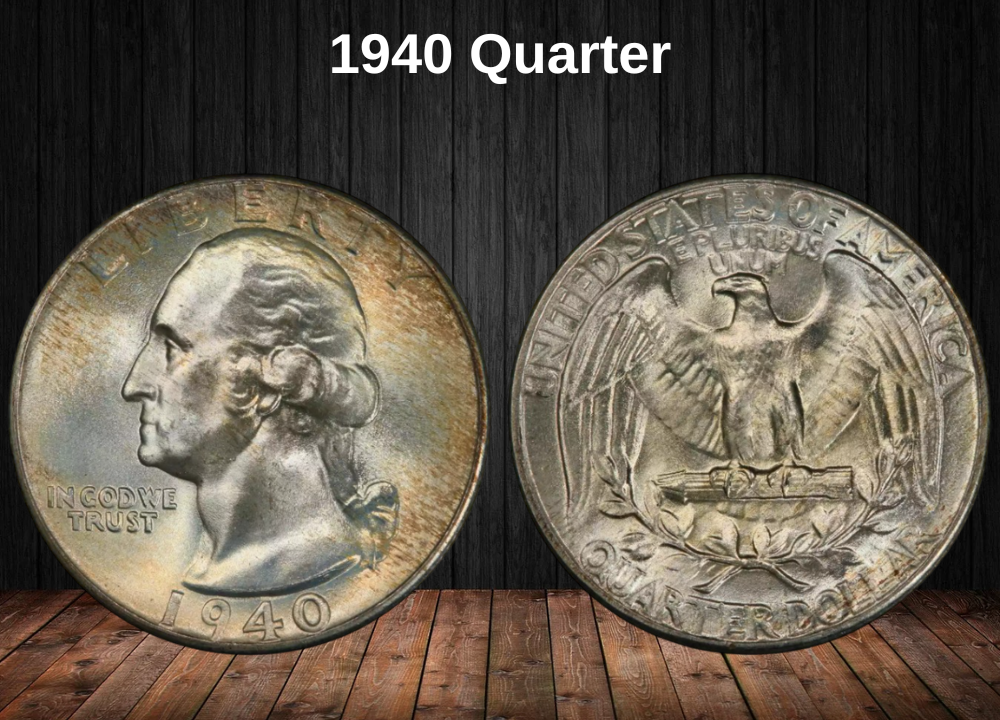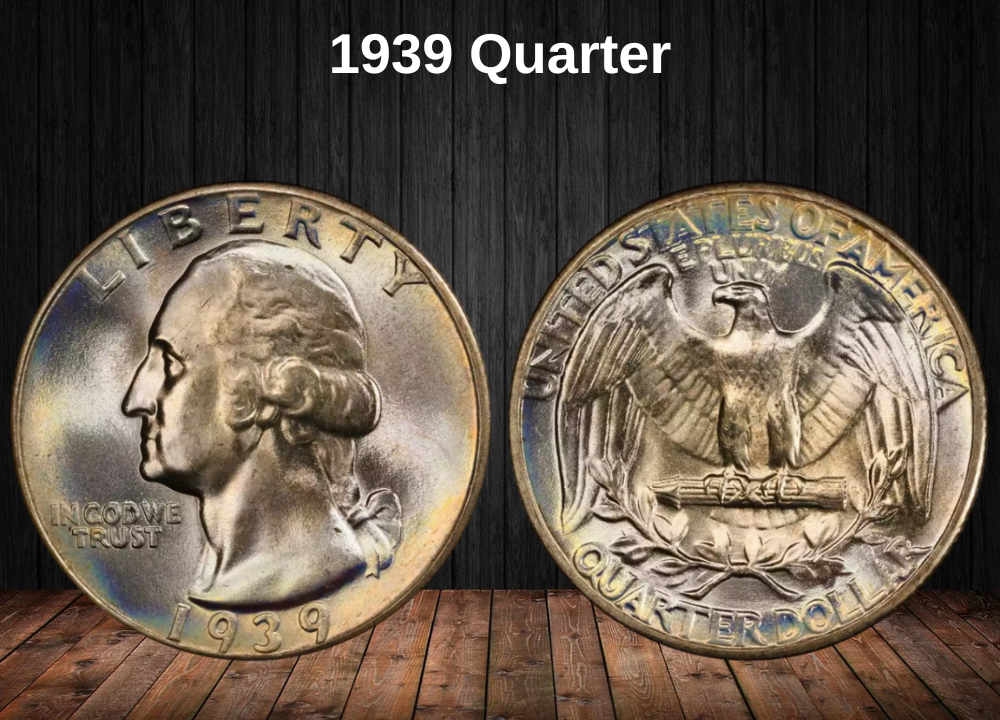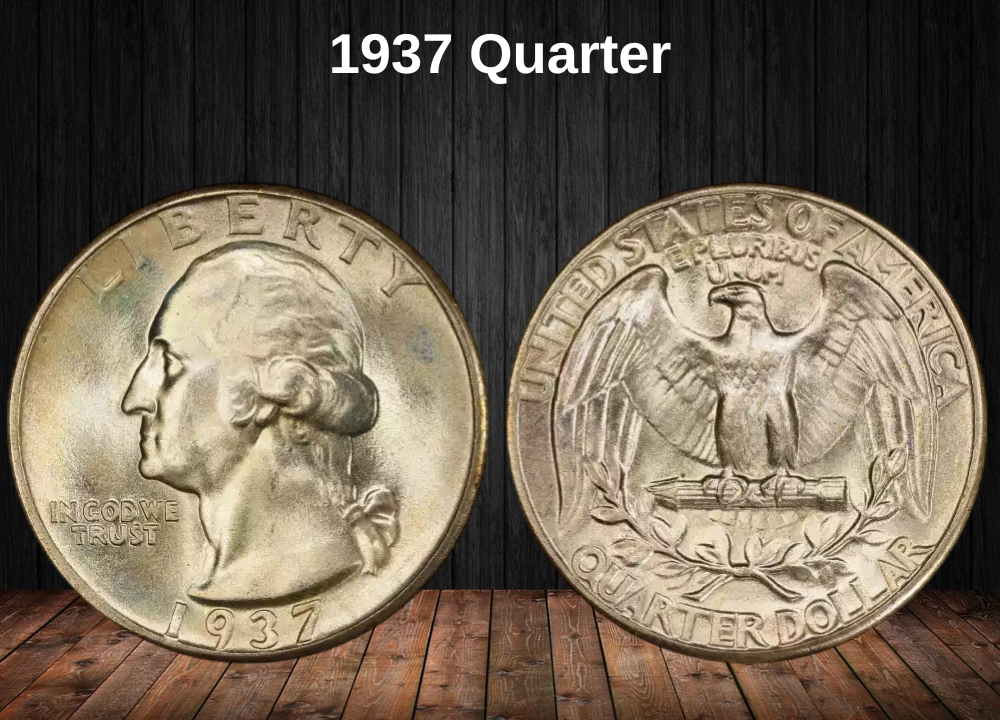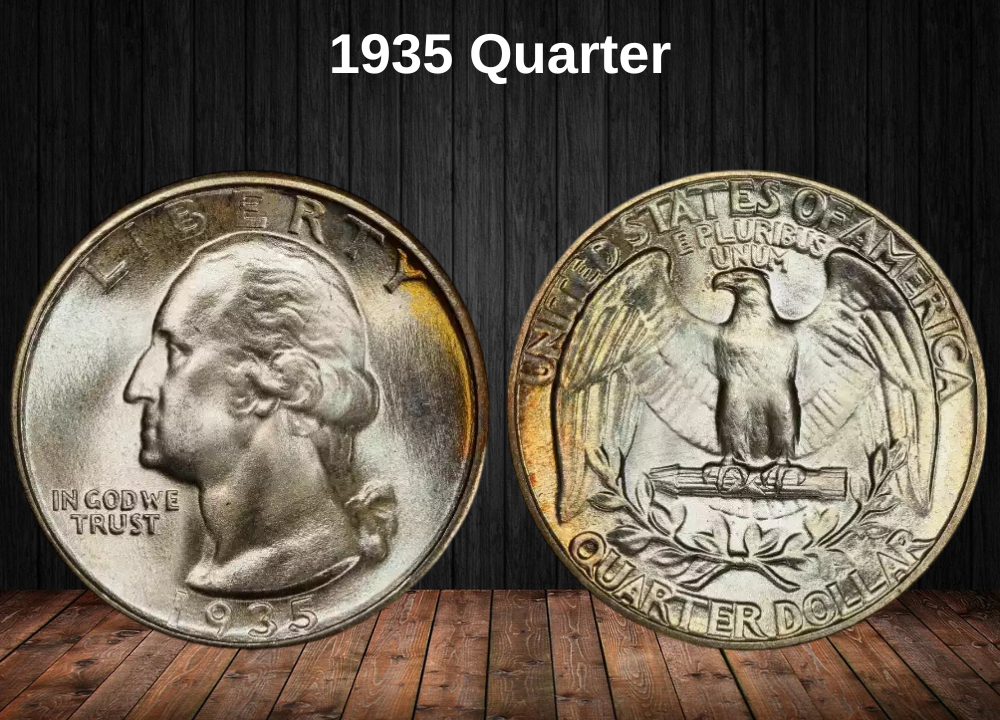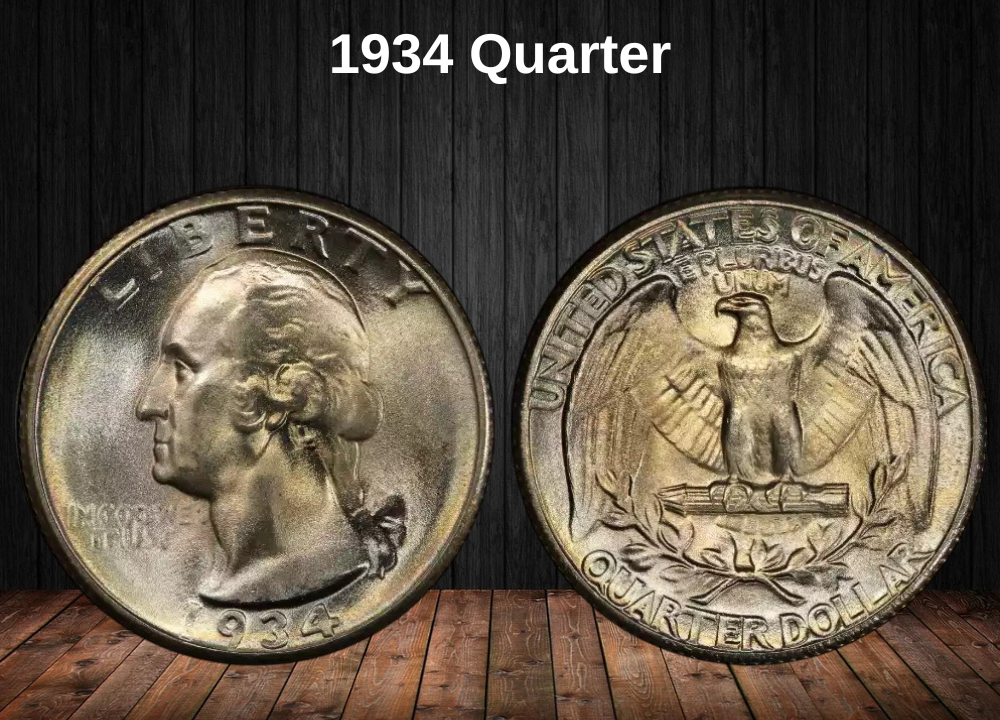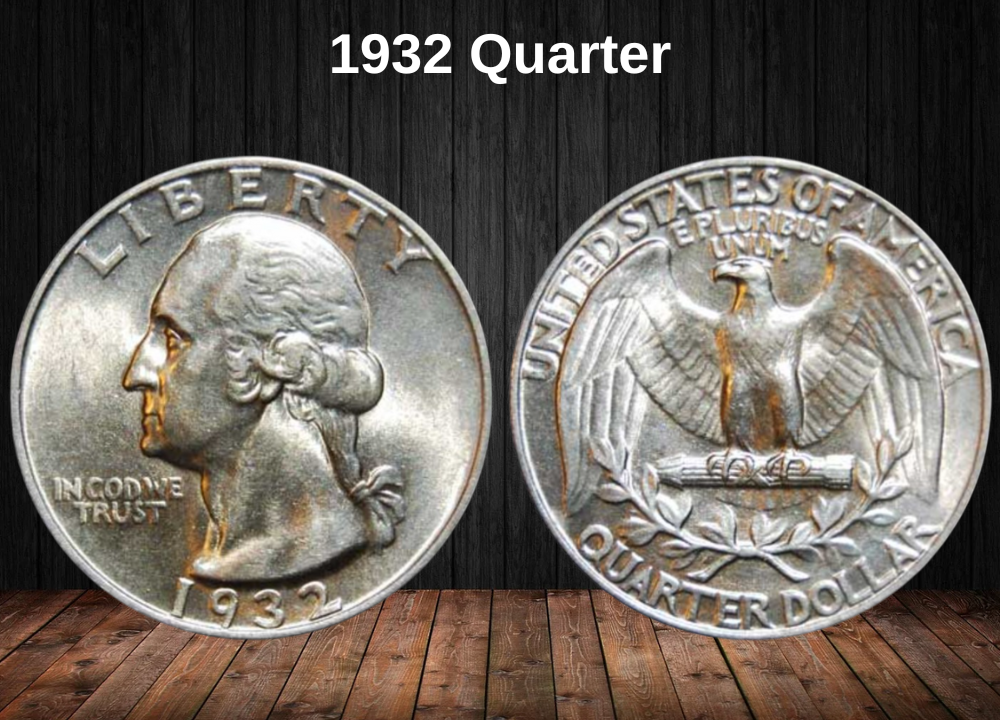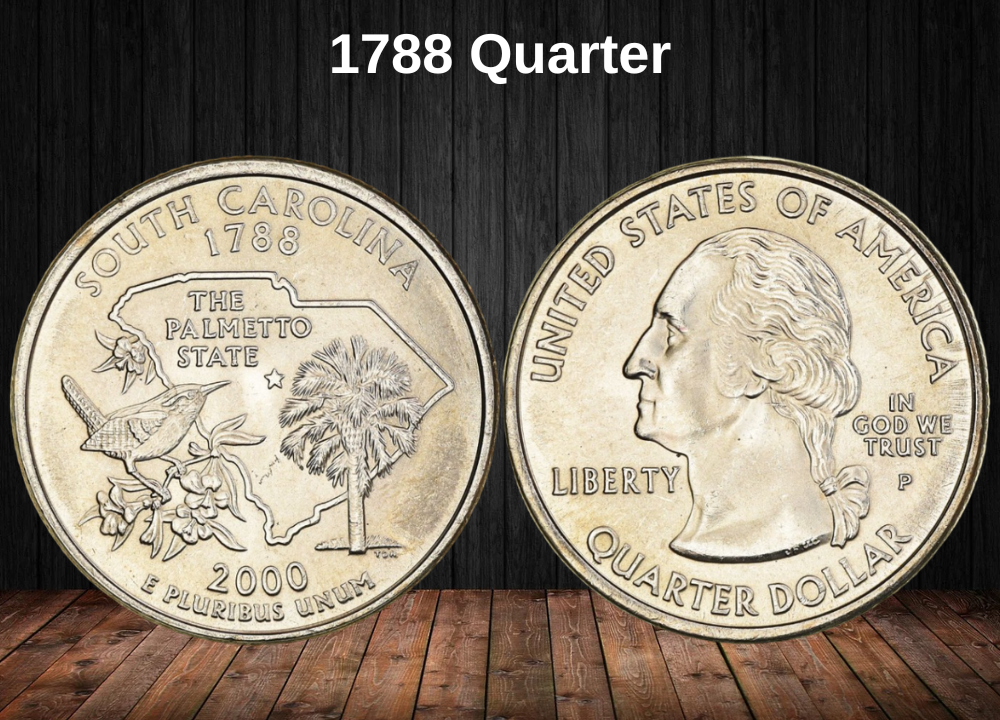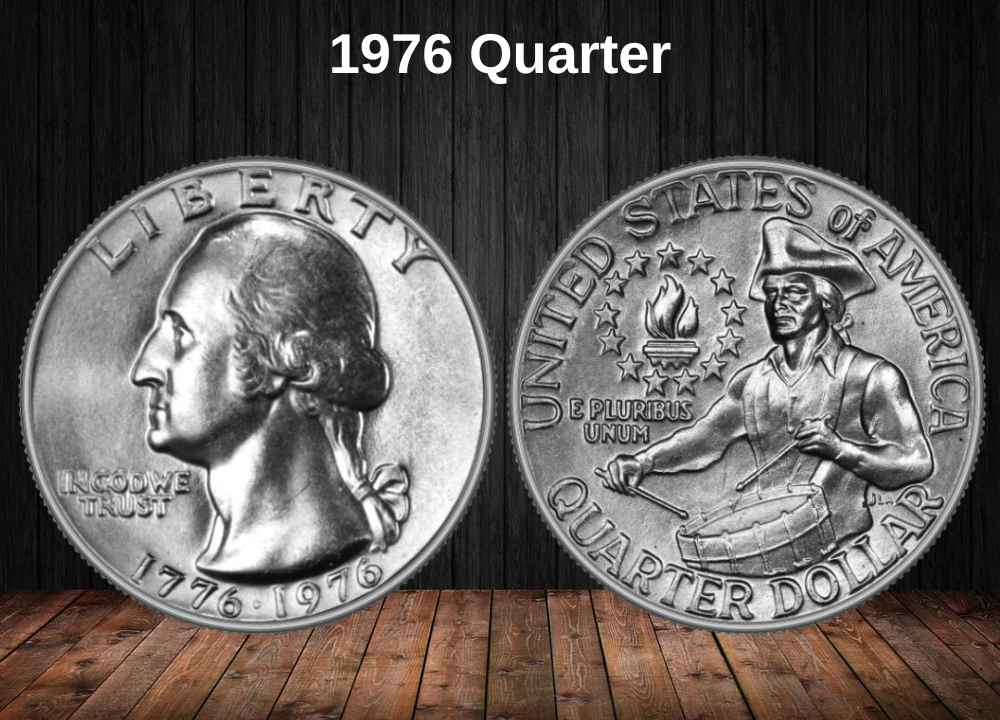The 1957 Washington Quarter represents one of the final chapters of America’s silver coinage era, struck just eight years before the Coinage Act of 1965 eliminated silver from circulating quarters.
Like all Washington quarters minted between 1932 and 1964, the 1957 issue was struck in 90% silver and 10% copper, a composition that collectors prize today as a tangible reminder of the nation’s precious metal heritage.
By the late 1950s, rising silver prices foreshadowed the end of silver coinage, making the 1957 quarter an increasingly desirable collectible. While millions were minted for circulation, most examples saw heavy use in commerce, leaving higher-grade survivors scarcer and more valuable.
Today, values span from $6–$7 for circulated examples to $700+ for premium proof Deep Cameos with dramatic contrast, demonstrating the diverse opportunities for both casual and advanced collectors.
1957 Quarter Value By Variety
Here’s a breakdown of current market values for 1957 quarters across different varieties, mint marks, and conditions:
1957 Quarter Value Chart
| Type | Good | Fine | About Uncirculated (AU) | Mint State (MS) | Proof (PR) |
|---|---|---|---|---|---|
| 1957 No Mint Mark Quarter (Philadelphia) | $6.00 | $6.17 | $7.00 | $29.86 | — |
| 1957-D Quarter (Denver) | $6.00 | $6.17 | $7.00 | $21.83 | — |
| 1957 Proof Quarter | — | — | $4.00 | — | $18.75 |
| 1957 CAM Proof Quarter | — | — | — | — | $51.00 |
| 1957 DCAM Proof Quarter | — | — | — | — | $738.40 |
History of the 1957 Quarter
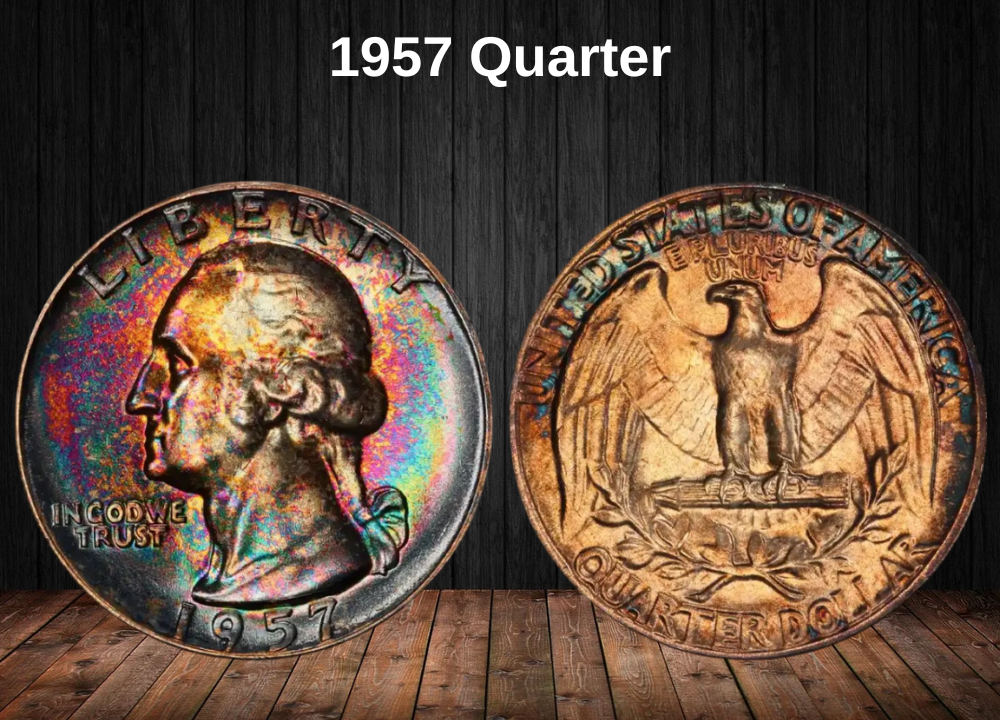
The 1957 quarter belongs to the long-running Washington quarter dollar series, first introduced in 1932 to honor the 200th anniversary of George Washington’s birth.
Preparations for this national commemoration began nearly a decade earlier when Congress created a Bicentennial Commission in 1924. Although that initial body became inactive, a new Commission was formed in 1930 to oversee the celebrations, which included the creation of a Washington coin.
Originally, the Commission proposed replacing the Walking Liberty half dollar with a Washington coin, but Congress ultimately chose to replace the Standing Liberty quarter instead.
At first, the Commission favored sculptor Laura Gardin Fraser, who had designed a popular Washington medal and possessed extensive experience in U.S. coinage. However, the Treasury Department rejected their recommendation and instead organized an open design competition.
The winner was John Flanagan, who modeled his design on the famous 1785 bust of Washington by Jean-Antoine Houdon. Flanagan’s work—showing Washington in a dignified left-facing profile on the obverse and a heraldic eagle on the reverse—became the face of the quarter for more than 90 years.
Production of the new Washington quarter began in July 1932, and coins entered circulation by August of that year.
Like all quarters struck between 1932 and 1964, the 1957 issue was made of 90% silver and 10% copper. Rising silver prices in the early 1960s eventually forced the Mint to abandon silver, replacing it with copper-nickel clad in 1965.
Today, the Washington quarter remains one of the longest-running coin series in American history, and examples from 1957—especially in uncirculated or proof condition—are highly prized by collectors.
Key Features of the 1957 Quarter
John Flanagan’s Washington quarter design continued in its established form in 1957, preserving the artistic refinement that had defined the series for more than two decades.
That year marked a record-breaking mintage, with both the Philadelphia and Denver mints striking millions of quarters. While the design remained consistent, small striking variations and die characteristics make 1957 quarters a distinct collectible within the silver series.
The Obverse of the 1957 Quarter

The obverse presents George Washington’s left-facing profile, a portrait adapted from the 1785 bust by Jean-Antoine Houdon. Key details include:
- LIBERTY inscribed boldly across the upper rim
- The motto IN GOD WE TRUST to the left of Washington’s profile
- The date 1957 positioned at the bottom
- Sculptor John Flanagan’s initials (JF) subtly engraved at the neckline truncation
The Reverse of the 1957 Quarter

The reverse continues Flanagan’s heraldic eagle motif, symbolizing both strength and peace. Its elements include:
- A powerful bald eagle with wings outstretched at center
- A bundle of arrows in its talons, representing readiness to defend
- Olive branches below, signifying peace
- The motto E PLURIBUS UNUM above the eagle’s head
- UNITED STATES OF AMERICA encircling the upper rim
- The denomination QUARTER DOLLAR below
- A small “D” mint mark placed between the eagle’s tail and denomination for Denver issues (Philadelphia quarters carry no mint mark)
Other Features of the 1957 Quarter
- Composition: 90% silver, 10% copper
- Silver content: 0.1808 troy ounces (5.623 g)
- Total weight: 6.25 g (0.2204 troy ounces)
- Diameter: 24.3 mm (0.95669 inches)
- Thickness: 1.75 mm (0.06870 inches)
- Edge: Reeded, with approximately 119 grooves
These dimensions and specifications reflect the traditional silver Washington quarter standard, which would remain unchanged until the 1965 transition to copper-nickel clad coinage.
1957 Quarter Grading
| Grade Level | Obverse Indicators | Reverse Indicators | Market Notes |
|---|---|---|---|
| Good (G–F) | Heavy wear, Washington’s hair is flat with no curl detail. | Eagle’s feathers nearly smooth, details merged. | Trades close to silver melt ($6–7). |
| About Uncirculated (AU) | Light wear on Washington’s cheek and hair above the ear. | Slight flattening on eagle’s breast feathers. | Still affordable, small premium over melt. |
| Mint State 60 (MS60) | No actual wear, but numerous bag marks and duller luster. | Weak strike often visible, especially on leg feathers. | Entry-level mint state, modest collector premium. |
| Mint State 65 (MS65) | Sharp curls in hair, clean cheek, minimal marks. | Eagle’s wing edges and breast feathers well-defined. | Big jump in value due to rarity of gem examples. |
| Mint State 67+ (MS67–68) | Fully struck hair and cheek with blazing luster. | Exceptional feather detail, virtually no contact marks. | Extremely rare, auction results $685–832+. |
1957 Quarter Guides
1957 No Mint Mark Quarter Value

The 1957 No Mint Mark quarter from Philadelphia is a fascinating study of high production combined with quality challenges. With 46.5 million coins struck, this issue is widely known for its weak strikes, the result of worn and re-polished dies carried over from 1956’s record mintage year.
In an effort to improve quality, the Philadelphia Mint even experimented with proof dies on some business strikes. This created a unique anomaly: coins with dull obverses but sharper, more brilliant reverses, a striking characteristic specific to 1957.
Because of these production inconsistencies, true gem-quality examples (MS66 and above) are exceptionally rare. While circulated pieces typically trade close to silver melt value, premium examples have achieved strong results at auction due to their scarcity in high grade.
1957 No Mint Mark Quarter Price/Grade Chart
Price by 1–70 Grade (Latest Auction Records Included)
| Date | Auction House | Price | Grade |
|---|---|---|---|
| 01/25 | SB | $65 | 67 |
| 01/25 | SB | $105 | 67 |
| 12/24 | SB | $125 | 67 |
| 04/24 | SB | $120 | 66 |
| 07/23 | HA | $119 | 67 |
| 06/23 | HA | $396 | 67 |
| 05/23 | HA | $109 | 67 |
| 04/23 | HA | $400 | 67 |
| 04/23 | HA | $59 | 67 |
| 03/23 | SB | $600 | 67 |
1957-D Quarter Value

The 1957-D quarter from Denver stands as a remarkable achievement in U.S. Mint history, with a record-breaking 77.9 million coins struck—the highest Washington quarter mintage since 1944.
What sets this variety apart is Denver’s superior strike quality compared to Philadelphia’s problematic production that same year. While Philadelphia struggled with worn dies and weak details, the Denver Mint maintained consistent production standards, resulting in coins with sharper definition, stronger luster, and more collectible eye appeal.
This technical superiority created a unique situation: despite the massive mintage, high-grade Mint State examples are more accessible than their Philadelphia counterparts, making 1957-D quarters especially popular with collectors seeking well-struck silver quarters from the 1950s.
1957-D Quarter Price/Grade Chart
Price by 1–70 Grade (Latest Auction Records Included)
| Date | Auction House | Price | Grade |
|---|---|---|---|
| 01/25 | SB | $216 | 67 |
| 09/24 | SB | $45 | 66 |
| 11/23 | SB | $168 | 67 |
| 07/23 | HA | $130 | 67 |
| 07/23 | HA | $1,980 | 68 |
| 07/23 | HA | $41 | 66 |
| 06/23 | HA | $159 | 65 |
| 05/23 | HA | $84 | 67 |
| 04/23 | DL | $160 | 67 |
| 11/22 | HA | $288 | 67 |
1957 Proof Quarter Value
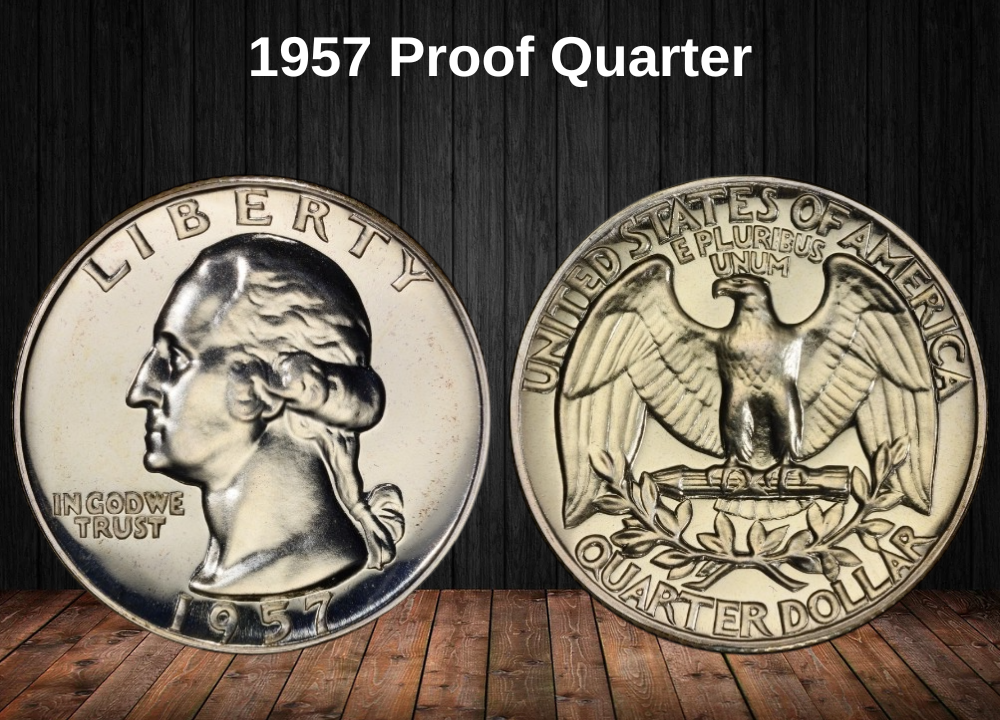
The 1957 Proof quarter from Philadelphia marks a turning point in U.S. Mint proof coinage. With an unprecedented mintage of 1.24 million pieces, it became the first modern proof issue struck in quantities that surprised—and eventually dismayed—the numismatic community.
The surge in production was driven by collector speculation after 1956, when strong demand for proof sets led buyers to over-order in 1957. To meet this frenzy, the Mint pushed dies to their limits, resulting in coins that often showed over-polished surfaces, reduced contrast, and weaker details compared to earlier proofs.
When the sheer size of the mintage became known, the market quickly collapsed, turning the 1957 Proof quarter into both a cautionary tale of overproduction and a highly accessible entry point into proof collecting. Despite this, well-preserved examples and cameo contrast varieties remain popular among collectors today.
1957 Proof Quarter Price/Grade Chart
Price by 1–70 Grade (Latest Auction Records Included)
| Date | Auction House | Price | Grade |
|---|---|---|---|
| 08/23 | HA | $75 | 69 |
| 05/23 | HA | $70 | 69 |
| 04/23 | DL | $33 | 67 |
| 12/22 | HA | $124 | 69 |
| 12/22 | HA | $149 | 69 |
| 06/22 | DL | $105 | 67 |
| 12/21 | DL | $55 | 68 |
| 05/21 | HA | $55 | 68 |
| 05/21 | DL | $44 | 67 |
| 09/20 | HA | $121 | 69 |
1957 CAM Quarter Value
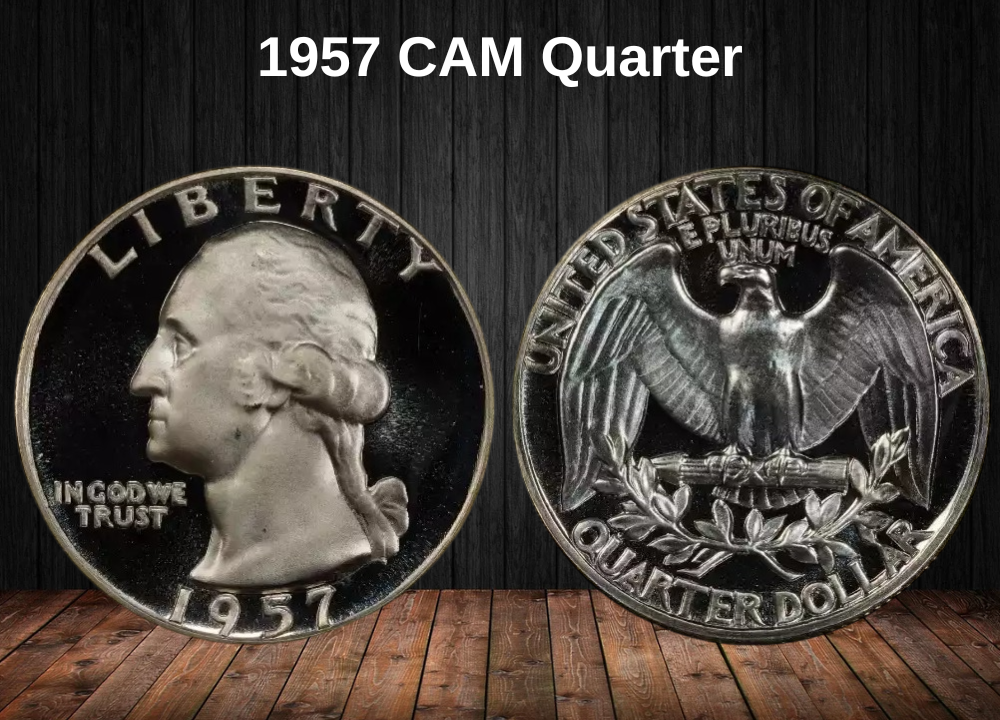
The 1957 Cameo Proof quarter represents a major leap in both visual impact and collectability compared to standard proofs. These coins feature frosted devices set against deeply mirrored fields, creating the striking black-and-white contrast that collectors prize.
What makes this variety truly special is its relative scarcity. With only 12.8% of the 1.24 million proofs qualifying for the Cameo designation, surviving examples are estimated at just 160,000 coins. Many proofs that originally displayed contrast lost their delicate frosting over time through handling or environmental exposure, leaving fully intact Cameo specimens significantly harder to find.
The strong premium over regular proofs underscores the value collectors place on this enhanced eye appeal. For proof set enthusiasts, the 1957 CAM is considered an essential upgrade that balances availability with prestige.
1957 CAM Quarter Price/Grade Chart
Price by 1–70 Grade (Latest Auction Records Included)
| Date | Auction House | Price | Grade |
|---|---|---|---|
| 06/23 | HA | $169 | 69 |
| 04/23 | DL | $205 | 69 |
| 03/23 | HA | $222 | 69 |
| 01/23 | DL | $185 | 69 |
| 12/22 | HA | $73 | 68 |
| 12/22 | HA | $84 | 68 |
| 11/22 | DL | $90 | 68 |
| 11/22 | HA | $169 | 69 |
| 11/22 | HA | $104 | 68 |
| 06/22 | HA | $60 | 68 |
1957 DCAM Quarter Value
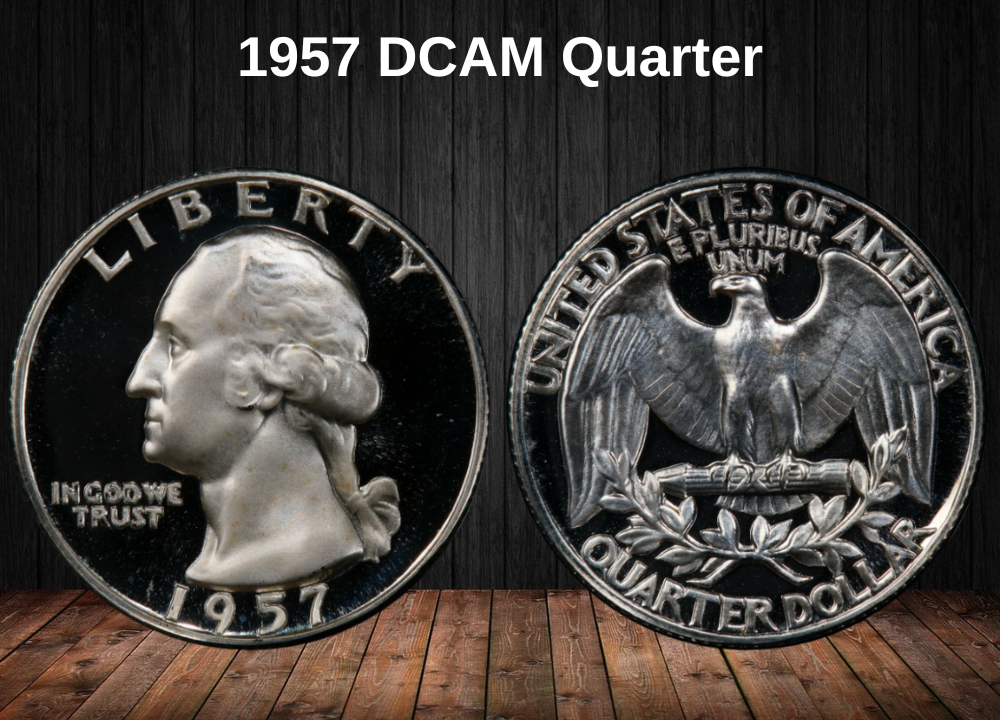
The 1957 Deep Cameo Proof quarter represents the pinnacle of proof production for this year, showcasing the most dramatic black-and-white contrast available. With heavily frosted design elements standing in stark relief against deeply mirrored fields, these coins achieve the ultimate in cameo effect and visual appeal.
What makes the 1957 DCAM truly extraordinary is its extreme rarity. Out of the original 1.24 million proof mintage, only 2.64%—roughly 33,000 examples—qualify for the Deep Cameo designation. This makes them nearly 16 times rarer than regular proofs. The scarcity is a result of the strict standards required: only the earliest, best-preserved strikes retain the flawless frosting and mirror finish necessary for DCAM certification.
The market premium underscores this rarity. With values exceeding $1,500 compared to just $26 for regular proofs, DCAM examples stand as the ultimate expression of 1950s proof craftsmanship, commanding top-tier prices and fierce bidding competition.
1957 DCAM Quarter Price/Grade Chart
Price by 1–70 Grade (Latest Auction Records Included)
| Date | Auction House | Price | Grade |
|---|---|---|---|
| 06/23 | SB | $3,360 | 69 |
| 04/23 | DL | $1,560 | 68 |
| 01/22 | HA | $1,440 | 68 |
| 07/21 | HA | $2,040 | 68 |
| 11/20 | SB | $1,020 | 67 |
| 08/19 | HA | $960 | 67 |
| 03/18 | HA | $552 | 66 |
Rare 1957 Quarter Error List
1. 1957 Type B Reverse FS-901
The 1957 Type B Reverse FS-901 is the most recognizable and widely collected error variety from the entire 1957 Washington quarter series.
This variety occurred when the Philadelphia Mint, plagued by worn and poorly striking regular dies, repurposed proof reverse dies for use with regular obverse dies. The result is a hybrid coin:
- Obverse → Dull appearance with weaker strike details
- Reverse → Sharper definition, proof-like fields, and superior clarity
This striking experiment was part of the mint’s attempt to improve quality control during a difficult production year, and it left collectors with a fascinating numismatic hybrid.
While more common than other 1957 varieties, Type B reverses are highly collectible for their distinctiveness, regularly bringing $200+ in higher grades and serving as excellent entry points into Washington quarter variety collecting.
1957 Type B Reverse FS-901 Quarter Price/Grade Chart
Price by 1–70 Grade (Latest Auction Records Included)
| Date | Auction House | Price | Grade |
|---|---|---|---|
| 01/25 | SB | $312 | 66 |
| 09/24 | HA | $480 | 67 |
| 08/23 | DL | $264 | 67 |
| 06/23 | HA | $552 | 67 |
| 02/23 | SB | $228 | 66 |
| 11/22 | HA | $336 | 67 |
| 08/21 | SB | $240 | 65 |
2. 1957-D Misplaced MM FS-501
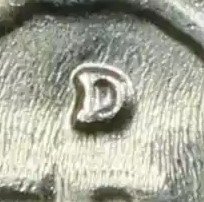
The 1957-D Misplaced Mint Mark (MM) FS-501 represents one of the more visually distinctive varieties from the Denver Mint’s massive output that year.
On this coin, the “D” mint mark is shifted out of its normal position—rather than sitting neatly centered between the E and R of QUARTER DOLLAR, it drifts noticeably toward the R, creating a visible misalignment even to the naked eye.
This variety occurred during manual mint mark punching, when the placement tool was incorrectly aligned during die preparation. While not as dramatic as overdates or doubled dies, the misplaced mint mark is immediately identifiable and adds a layer of collectibility to the otherwise common 1957-D issue.
Premiums are strong, with values typically ranging from $200–$270, depending on the degree of misplacement and the coin’s preservation.
1957-D Misplaced MM FS-501 Quarter Price/Grade Chart
Price by 1–70 Grade (Latest Auction Records Included)
| Date | Auction House | Price | Grade |
|---|---|---|---|
| 01/25 | SB | $264 | 66 |
| 09/24 | HA | $216 | 65 |
| 05/23 | DL | $240 | 66 |
| 11/22 | HA | $270 | 65 |
| 07/21 | SB | $228 | 64 |
3. 1957-D Re-engraved TF FS-901
The 1957-D Re-engraved TF (FS-901) is one of the more intriguing die preparation anomalies of the Denver Mint’s record-breaking production year. This variety features the letters “TF” in “TRUST” showing clear signs of re-engraving or hand strengthening on the working die.
During 1957, die wear and striking weakness were common issues. To extend die life, engravers occasionally re-cut or re-engraved individual letters to restore detail. On this variety, the re-engraving produced visible doubling or strengthened interior lines within the “T” and “F,” giving them an unusually bold and uneven appearance compared to surrounding letters.
While more subtle than dramatic doubled dies, this variety holds significant appeal for specialists and variety hunters, as it documents the Mint’s attempts to maintain quality standards during a year of massive coin output.
1957-D Re-engraved TF FS-901 Quarter Price/Grade Chart
Price by 1–70 Grade (Latest Auction Records Included)
| Date | Auction House | Price | Grade |
|---|---|---|---|
| 06/24 | SB | $312 | 65 |
| 04/23 | HA | $216 | 65 |
| 01/23 | DL | $240 | 66 |
| 11/22 | HA | $192 | 64 |
| 07/21 | SB | $288 | 65 |
Where to Sell Your Quarter Coin?
Now that you know the value of your quarter, the next step is deciding where to sell it. There are several trusted options—both online and in person—that can help you get the best price depending on your coin’s rarity and condition.
To see the full list of recommended places, along with their advantages and disadvantages, check our complete guide on where to sell your quarter coins.
FAQ About the 1957 Washington Quarter
1. Why is the 1957 Quarter significant to collectors?
The 1957 Washington Quarter, struck in 90% silver, represents the late 1950s era of U.S. coinage. While not a key rarity, it is popular among collectors building date-and-mintmark sets of silver quarters.
2. Which mints produced the 1957 Quarter?
It was struck at Philadelphia (no mint mark) and Denver (“D”). No San Francisco issues exist for this year, making it a simpler but still collectible part of the series.
3. Are there notable errors or varieties for the 1957 Quarter?
Yes. The most famous is the 1957-D DDO FS-101 (Doubled Die Obverse), showing strong doubling on LIBERTY and IN GOD WE TRUST. Denver issues also feature Repunched Mintmarks (RPMs), and off-center strikes or clipped planchets are collected as mint errors.
4. How much is a 1957 Quarter worth today?
Circulated examples typically trade for $5–$15, close to silver melt. In Mint State (MS65), values range from $75–$200, while superb gems (MS67+) can exceed $1,000. Rare varieties like the 1957-D DDO can reach several thousand dollars when certified in high grade.
5. What should collectors look for in a 1957 Quarter?
Check Denver issues closely for doubled dies and repunched mintmarks. Strong strikes with crisp details in Washington’s hair and the eagle’s feathers add value. Coins with natural toning, original luster, and no signs of cleaning are the most desirable, especially when certified by PCGS or NGC.

